Tag: KILZ 2 All-Purpose Primer
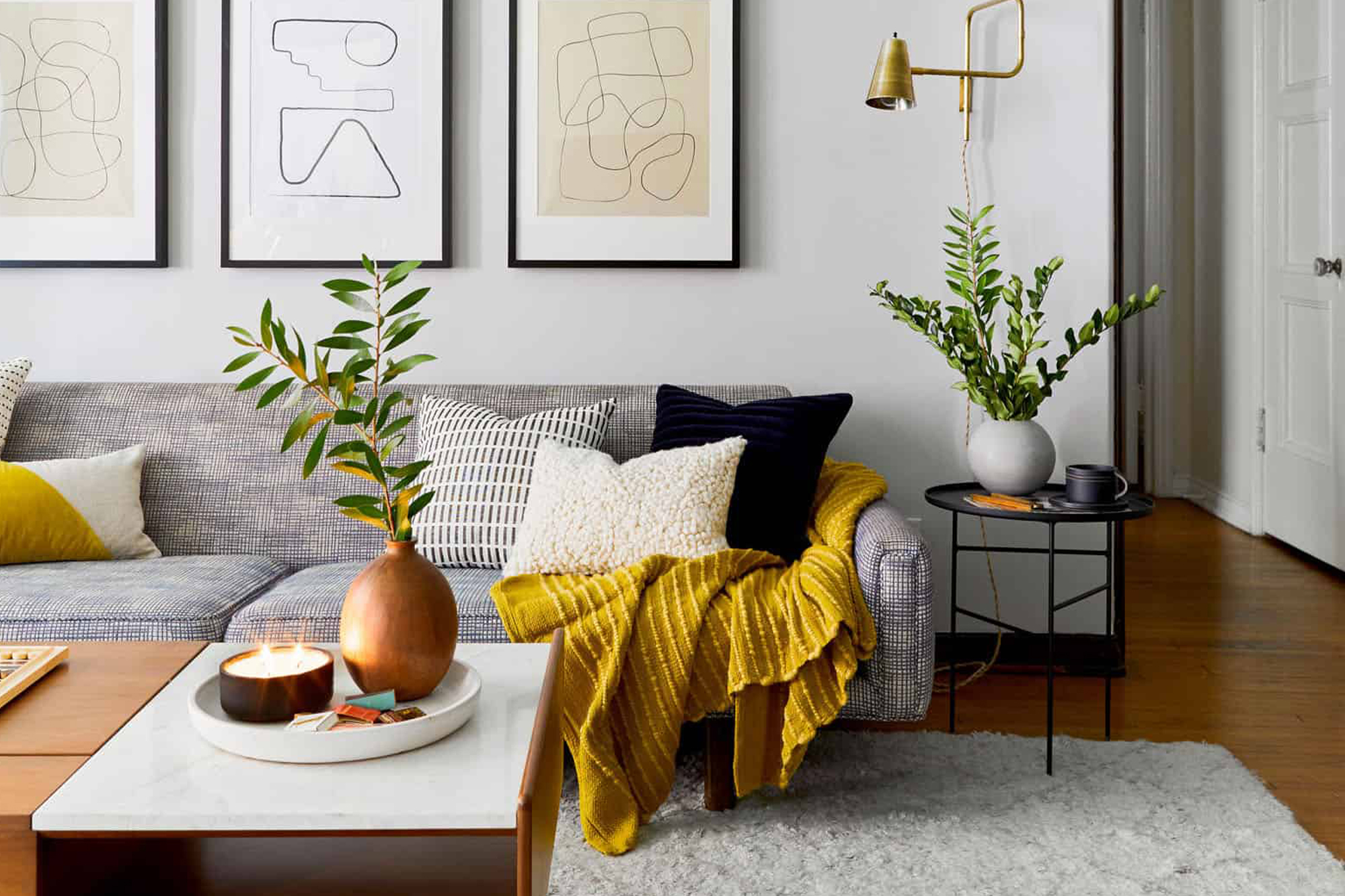
Smart Spaces with Emily Henderson
February 19, 2021One of the biggest design “trends” we’re seeing as we move into this new year is multi-functional spaces. We put “” around the word trends, simply because while we are seeing plenty of beautiful multi-purpose spaces pop-up, the trigger for these transformations is often an essential need. The need for a place to log on to your zoom calls that isn’t your couch or kitchen island, the need for kiddos to have a place to do their schoolwork that doesn’t devour the dining room table, and even the need to have a place for some peace and quiet (meditation corner anyone?) since the local yoga studio is still closed.
Functional spaces are key to thriving in 2021, so why not make them beautiful too! One of our favorite interior designers and great friend of the KILZ® Brand, Emily Henderson, is a true pro when it comes to designing spaces that not only look amazing but work hard to meet her client’s needs. And like any seasoned designer, Emily knows that proper prep work is essential to professional quality results for every project both large and small. We sat down with Emily to get her tips and tricks for creating multi-functional spaces, learn how she properly preps her projects and get a sneak peek at a home office reveal she’s currently overseeing.
Hi Emily! We’re so excited to have you on the blog today. You’ve been a KILZ fan for some time, can you share what you love most about KILZ and why you trust KILZ products for your own projects and for your clients?
Hiya, thank you! A couple things: first – and I think this is the biggest one – it’s just a huge time saver. And it emboldens us to take more risks. And lastly, I guess it’s just a good, functional product. I can elaborate!
I think it’s a pretty commonly shared opinion that painting is the most affordable, most impactful thing you can do to change the look of the space. I agree with that! But if you want to make sure that your paint job actually looks good, you’re going to want a great blank canvas behind it. KILZ is the brand that all of our painting contractors use to prime our spaces, so there was a default level of trust there already – if you’re ever on a construction site before paint goes up, I’m sure you’ll see tubs of KILZ everywhere – but they use it because it makes their lives easier. Walls are smoother, paint sticks better, some of the primers even have mold- or mildew-fighting properties. (We used one of those primers in our windowless basement bathroom.) Instead of schlopping on coat after coat of paint and hoping for even coverage, it’s nice when you can just prime and then roll out two coats.
But also, it’s fun to have KILZ in your back pocket. My team in particular has been able to go crazy with paint in their apartments – you know, like green trim in the bedroom or purple stripes in the bathroom, but done tastefully! – with the knowledge that they’ll be able to change it back easily when they move out without losing their security deposit. We are genuinely big fans.
What’s one project in particular that you couldn’t have completed without KILZ? And which primer did you use?
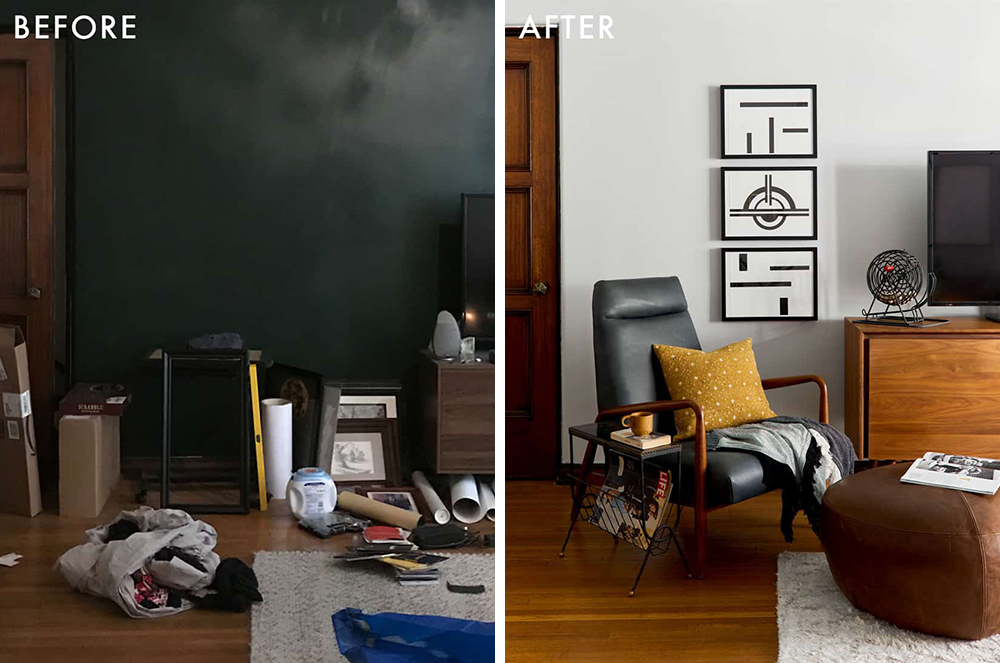
Oh boy, where do I begin? Top of mind would be this living room that my team, lead by Julie Rose, just finished. It was in a historical LA building, right off the first-floor courtyard, and it was dripping with charm…but that black accent wall wasn’t doing any favors. It was just bumming us out. There was only one window in the space, which faced into the heart of the building, and it just made the room feel dark and depressed.
There were a couple problems in the space that we all deal with – not a ton of storage, a pass through layout, you know, the classics – but the main one was really that this wall was overshadowing everything in the space…literally. So we settled on painting the whole space, including the trim, in ‘Chalk Gray,’ brought out our painting contractor and he primed the whole wall in under half an hour – our photographer, Sara Tramp, had popped in to grab progress shots and he had already almost finished by the time she was set up and ready to go.
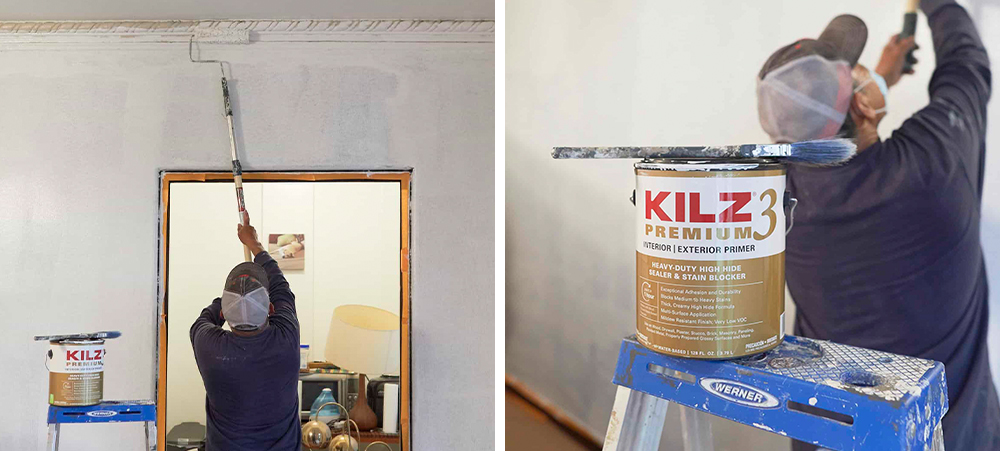
Those photos were taken after one coat. One coat! Do you know how long that would have taken to cover up with just white paint? We ended up priming every wall in the apartment so we’d have a nice, even base and a clean backdrop for our new gray walls and by the time we finished, it was such a beautiful space. The before and afters were staggering. It was like we had breathed new life into the architectural details – once everything had been cleaned up, you could finally see the beautiful moulding and the warm wooden details actually stood out. I’m so proud of how this one turned out.
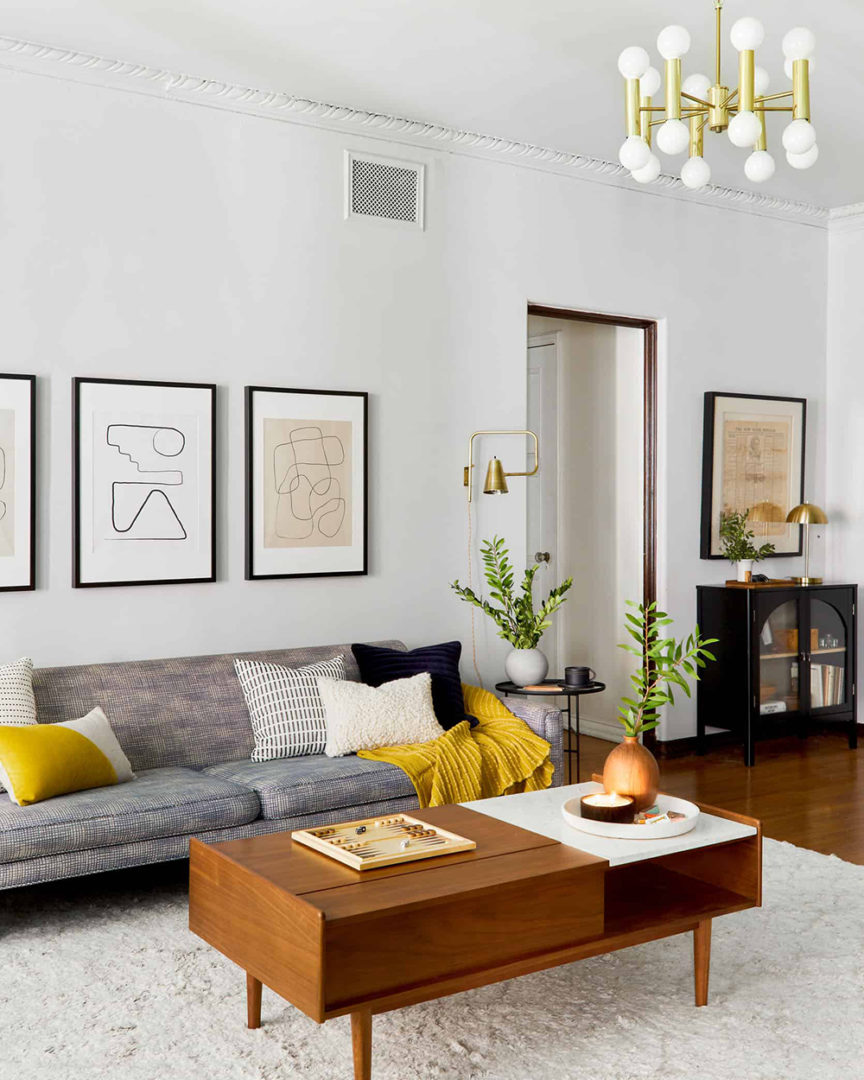
Now let’s talk about prep. What is your advice for a novice DIYer looking to take on a painting project? How much time should they allocate to prep and what steps should they absolutely not skip?
If you’re painting the whole room, take the time to do it right. Sure, you can change paint, but not in the same way that you can swap out a throw pillow or blanket. Before doing anything else, I’d recommend taking 10 minutes to look around and to find and fill all your tiny nail holes or hairline cracks. If you ignore these things and paint straight over them, your eye is going to be drawn straight to them every time you walk in.
My team is split on the value of painter’s tape – actually, my photographer recently painted all of her closet trim freehand after installing a gorgeous wallpaper, out of fear that any tape would pull it off – so I think that if you have a pretty steady hand and a couple of baby wipes, you should feel free to go proceed without taping. You can also throw down drop cloths and make sure to move all your furniture out or to push it to the middle of the room and cover it!
From there, I’d recommend jumping straight into priming. For an average sized room – let’s say 11’ x 12’ – it should take about an hour or two, plus it’ll save you a ton of time on the back end, since you won’t need to paint as many coats to achieve vibrant coverage. The whole process, from filling holes to moving pieces to priming, shouldn’t take more than half a day and it’s definitely worth it.
Like we mentioned in the intro, you’re a true pro when it comes to designing multi-functional spaces. What are the key things you consider when presented with a project to create a room that will meet various needs?
Wow, thank you! There are three big questions to ask: who is using the space? What are the functional requirements? And how do you want it to feel?
For example, a multi-functional space shared exclusively by children, like a playroom or a homework room, and a multi-functional space that needs to work for the whole family, like a rec room, need to be designed differently. A room for kids will have softer pieces to abate the potential for injuries, more open floor space to encourage play, more nooks for alone time, etc. whereas you may float more pieces in a whole family space to encourage smaller zones for each task at hand.
Once you’ve nailed down who is using the space and what it’s for, the most important thing to figure out is how you want it to feel. Try to pick a few words that describe the vibe you’re going for. On my team, some favorites recently have been “warm grandpa library,” “bright art deco discotec,” and “moody old world restaurant.” Picking how you want it to feel when you walk in will really help dictate pieces, layout, and will remove a layer of design analysis paralysis that I think we all struggle with occasionally.
Home offices are by far one of the most popular spaces we’re seeing people DIY. What is your favorite office project you’ve completed recently? (And did you use primer?!)
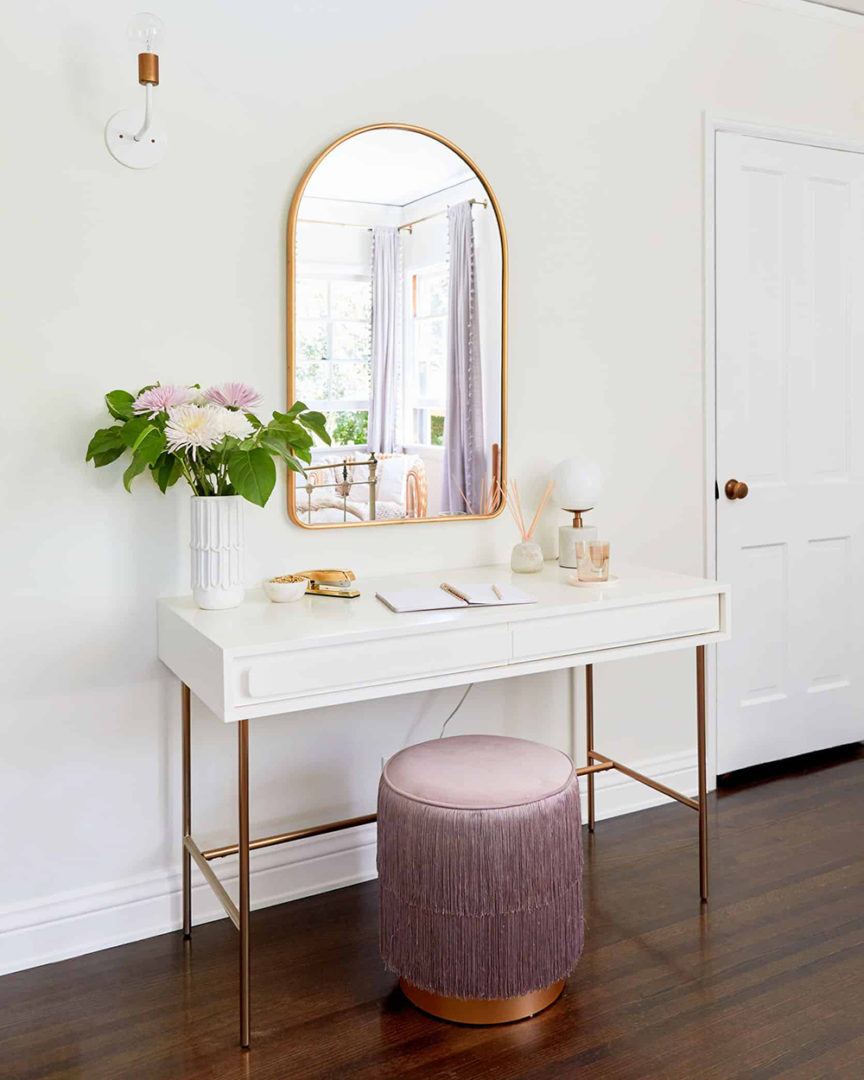
Did we use primer? You jest. Of course we did! My team, again led by Julie Rose, recently finished this teenager’s bedroom makeover, which obviously had to include a multifunctional office space for some homeschooling. I actually designed this space about a decade ago, so it was thrilling to be able to work on its update.
We ended up choosing this vanity in particular because of its size and storage – it wasn’t too heavy for the space and it can pull double duty as the perfect sized desk for a high school student who’s currently just learning from her laptop.
I guess that rolls into my main tips for folks looking to build an office or WFH space. Look for pieces that can serve a few purposes that you’ll still want to look at after you’ve returned to work or school. If you’re able to, try to grab a desk that’s the appropriate scale for your room. This one is a great size for a teen, though I know that some adults will need more space and closed storage. Finally – and the tip I love the most, as a stylist – see how you can accessorize your WFH or homeschooling space to make it feel a little less sterile. The mirror above this desk in question is across from the windows, so in addition to being a great place to get ready in the morning – there’s a cabinet with closed storage in the room, too, in case you’re wondering where the non-school products are kept – it also does a great job of bouncing light around the room.
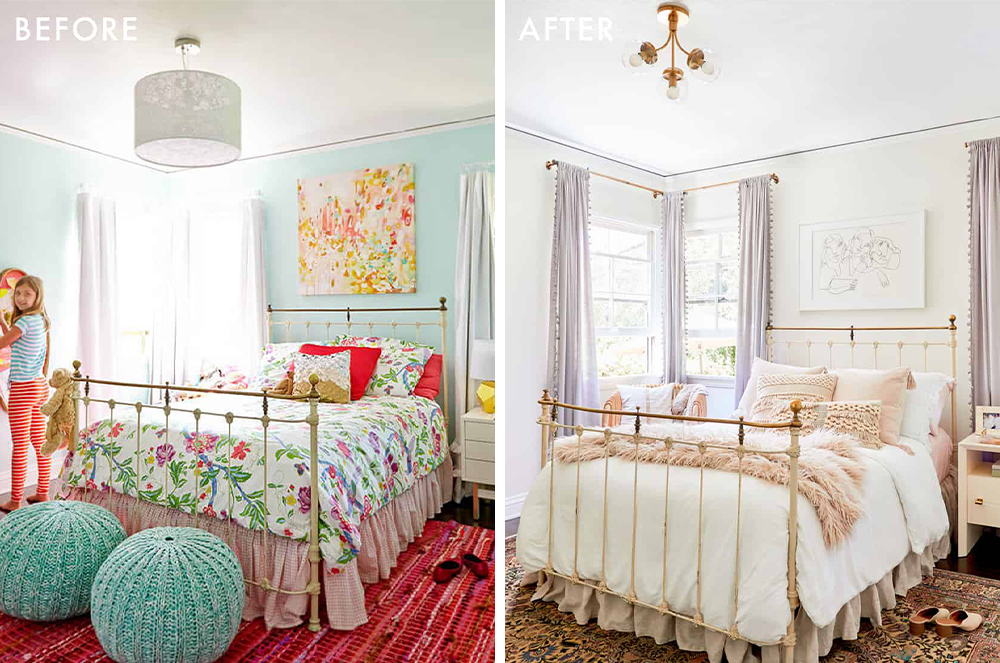
You know I couldn’t leave without a paint transformation photo. Just such a bright, happy, serene bedroom and homeschool space!
One of the biggest woes of a home-office-lacking DIYer is that they just don’t have space for an office. What creative hacks or solutions have you seen to create an office in a small or unique space?
OH BOY. Let me tell you about the project we’re working on right now with one of my favorite new designers, Keyanna Bowen! She’s figured out an incredible way to separate her space and I can’t wait to see it all finished.
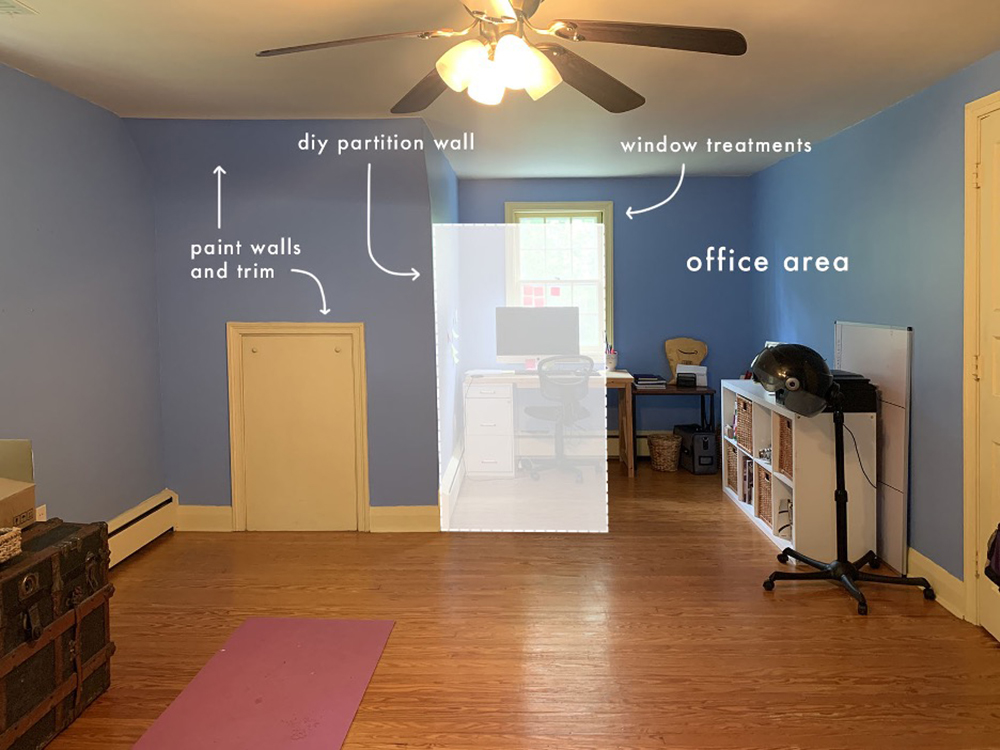
Here’s where we’re starting from. Beautiful! Just kidding – there’s obviously a ton of charm in this room, but it just needs a little bit of a boost. Keyanna wants this space to still serve as a guest room and as a yoga space, so we can’t go all-in on just decking it out as an office. I’m sure that’s a problem most folks at home are familiar with, too! Key’s plan, though, is awesome: she’s planning on building a rope wall partition. A rope wall partition! It’ll hang from the ceiling and it will still let in light while defining the office as its own separate space.
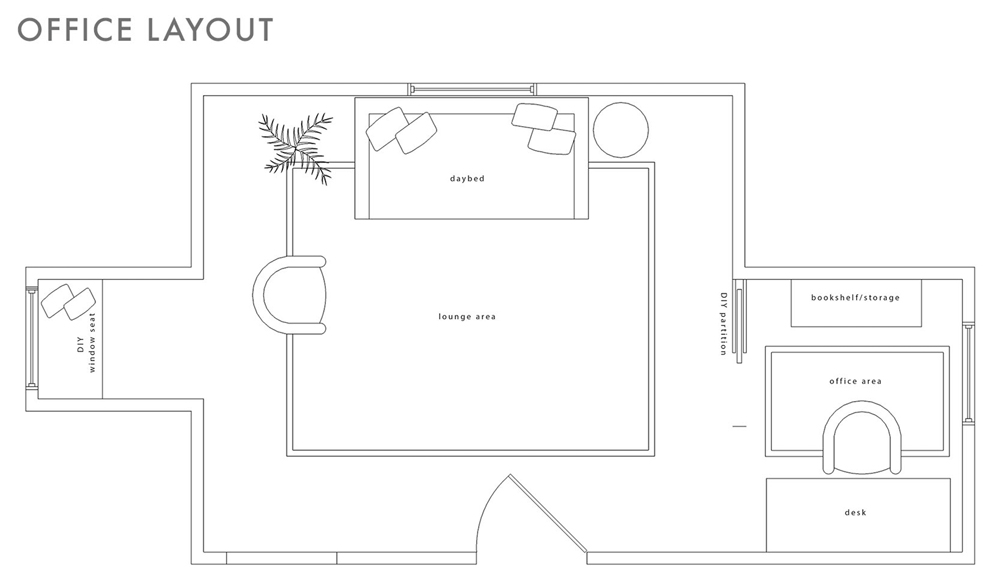
Over the past year, I think my favorite WFH spaces or DIY offices have been the ones where folks have turned their closet into a whole desk setup (long live the cloffice!) or folks who, like Key, have figured out a functional way to use a previously-awkward nook. I’m so inspired! If you aren’t blessed by architecture, though, the idea still stands: is there a way to carve out a corner of your home with privacy screens? Can you hang a similar partition in your living room to give the illusion of a separate workspace? The possibilities are endless.
A word we hear a lot when talking about multi-functional room design is zoning. Can you share what exactly that is and some tips to do it right?
I love a zone! I talked about it a little earlier, but it’s really about figuring out how to clearly define the different functions that take place in each part of a room. The best part: it’s very easy to do! You can set up separate zones in minutes by anchoring areas with different rugs. Key does it beautifully above, with the office and lounge areas both being really clearly defined by their rugs. It makes total sense, because when our brains see different flooring, they think, “oh, different room.”
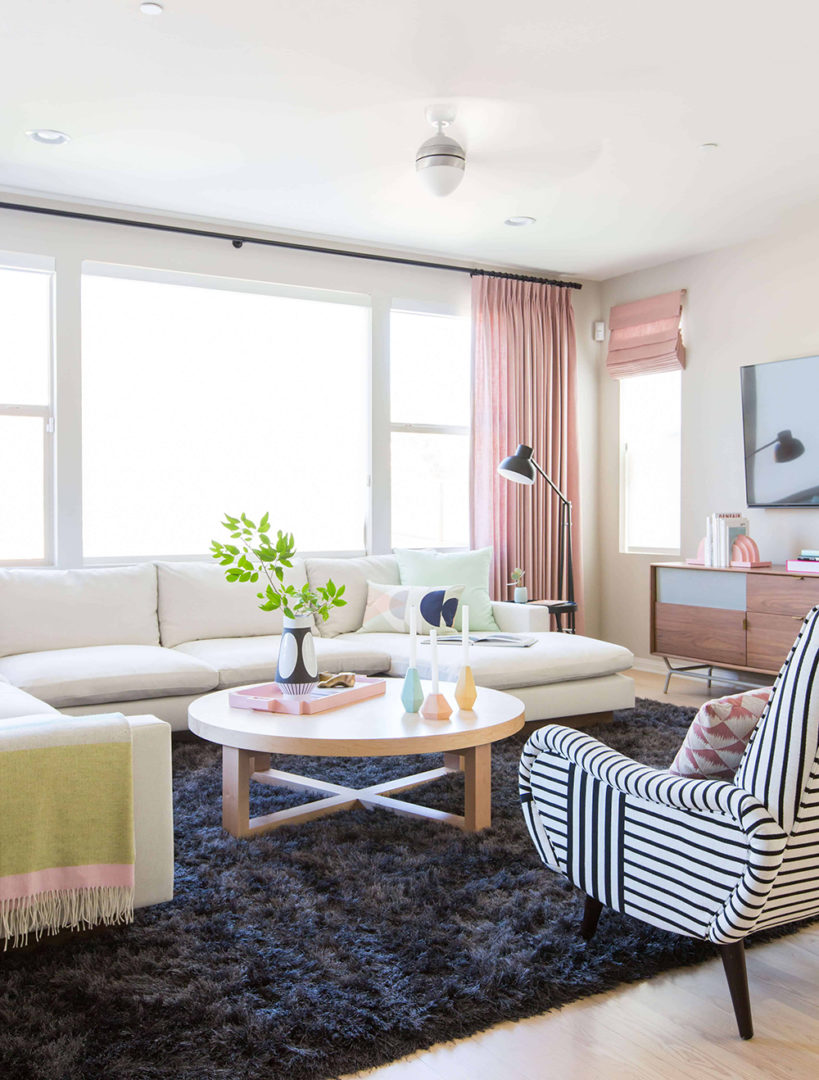
Zoning is really essential for folks with open concept layouts – especially now! So in this project – from 2016, oh my gosh, though it’s still one of my all-time favorites – we created a huge and comfortable family room by flanking this super-soft rug with a huge, u-shaped sectional and two graphic chairs. It’s bright and open, but still definitively its own space.
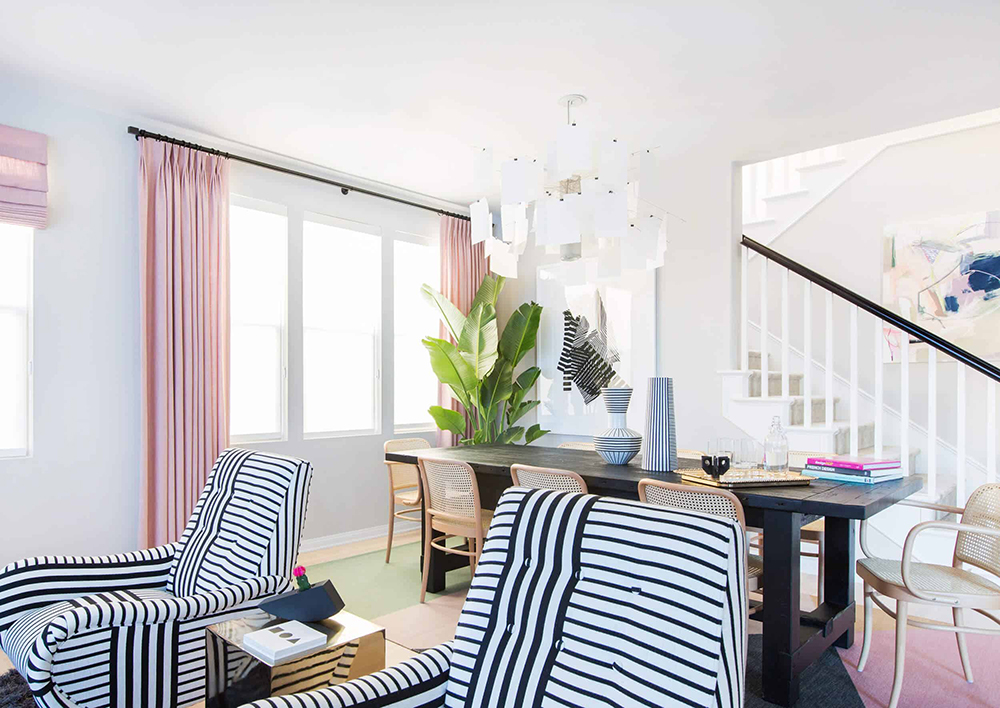
A few feet away, and anchored by a flat, easily-cleanable dhurrie rug, is the dining area. You’ll probably notice a lot of repeating elements: graphic hits of black and white, light woods, and pastels. Keeping a cohesive color palette isn’t always necessary – I am all for exploring, playing, and getting weird – but it does make the design process easier and it’ll make your rooms feel more relaxed and comfortable.
Switching gears to home-school rooms and kid’s study spaces. What was the biggest hurdle in creating a functional space for little ones?
Making spaces so that kids will actually use them! I think that a lot of the time, design-minded people like myself can get really hung-up on the vision. We want to make something beautiful and impressive and worth sharing, but kids don’t necessarily share those same motivations. They just want a fun place to play, learn, and explore.
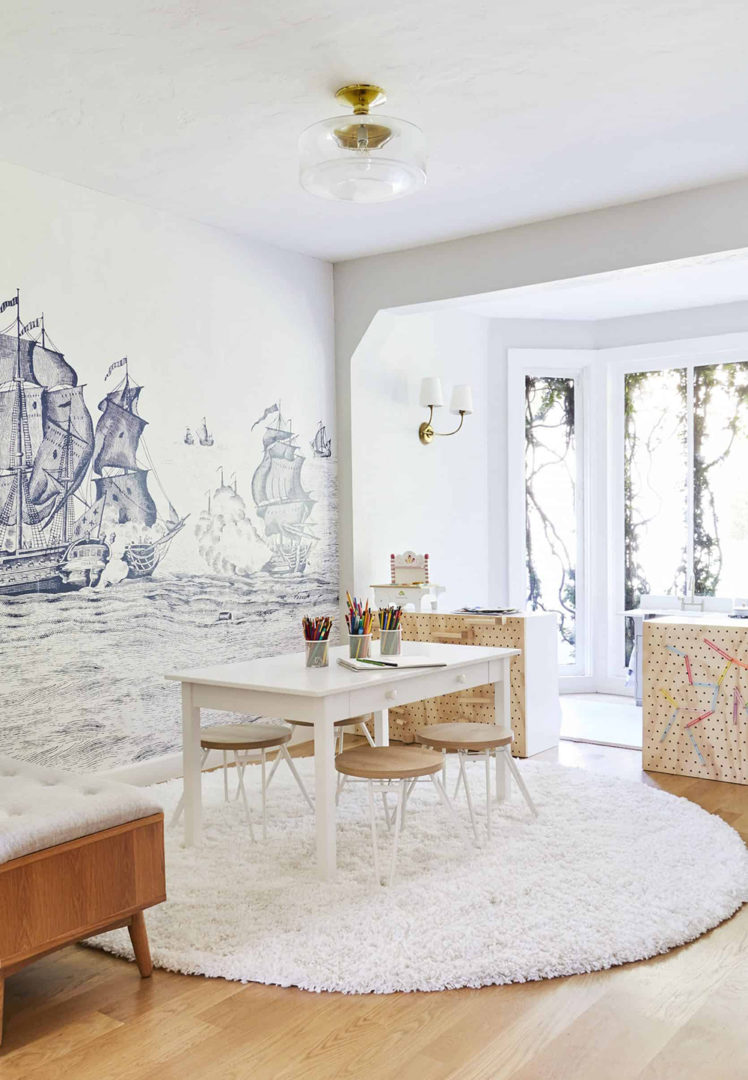
The playroom is actually the space I struggle with most. My kids are still very young – 5 and 7 – so we’re early in the homeschool process, but they love art and playing with legos, so once I chose to design for those two hobbies in particular, it immediately became more functional and the kids used the space way more.
To that end, I’d ask: what do your kids like doing? How does your child actually study or do homework? If they love drawing, give them a space for that and relinquish your dreams of them ever actually wanting to play with the enormous dollhouse you bought in the hopes that you could play with it together. (Speaking to myself, here.) If you build it, with your kids and their specific tastes and interests in mind, they will come.
Can you share a recent personal or client projects you’ve done that included a room for kids? And of course, we want to know how primer came into play!
I’m in love with this room that my team, again led by Julie Rose (are you sensing a theme here?), recently completed for a little girl. We wanted to make a magical bedroom with a specialty art area and I think we really made it sing.
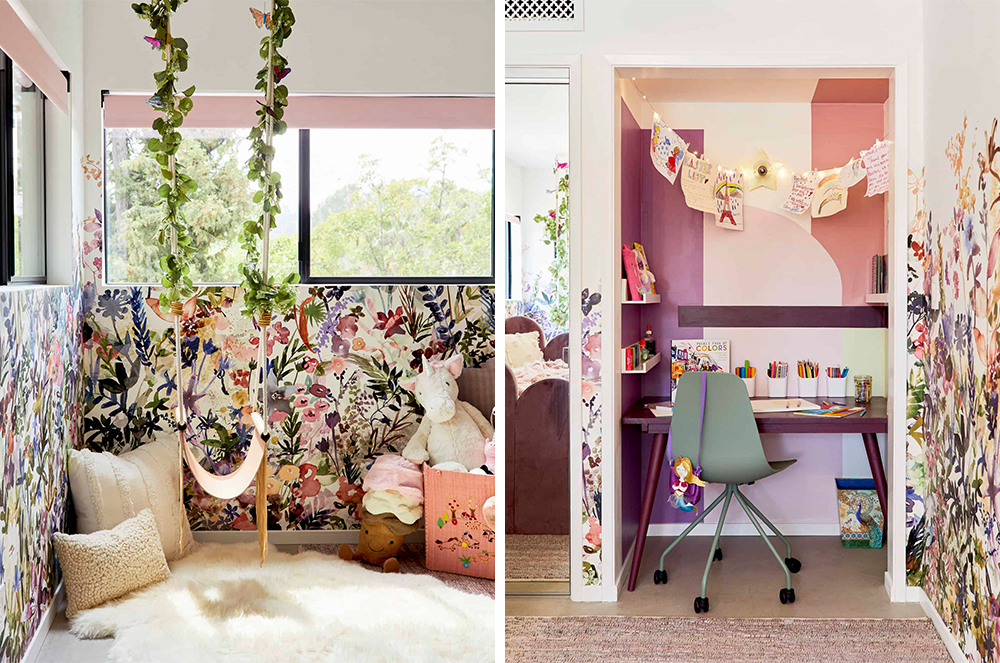
As for how we used primer – it went everywhere! We actually primed underneath the wallpaper, per our installer’s recommendation. It covered up the previous paint and served as a plain backdrop so that the white pieces of wallpaper would appear clean and fresh, but it also worked as a bit of a barrier so that the wallpaper paste didn’t bond with the walls too much. While wallpaper is pretty permanent, priming first can make the removal process a bit less painful in that you won’t need to worry about ripping off chunks of drywall by accident.
We also obviously had to prime that art nook so that all of our magical, fairy-inspired colors would show up. We love the way it turned out and so did the family.
Before we wrap up, let’s talk about the project that we’ve partnered with you on… that also includes your design mentee Key! Can you tell us about her, the project and give us any sneak peeks?
Woops, I guess I already spilled the beans a little bit on this one, but I’d love to talk more about Key! Earlier this year, my team and I decided to take on a mentee – I’ve been so incredibly fortunate to find success in this field and I’m now surrounded by people who are experts in editorial and social and more, so I wanted to share the wealth and hopefully, help more folks find long-term career stability in this weird world of internet design and influencing.
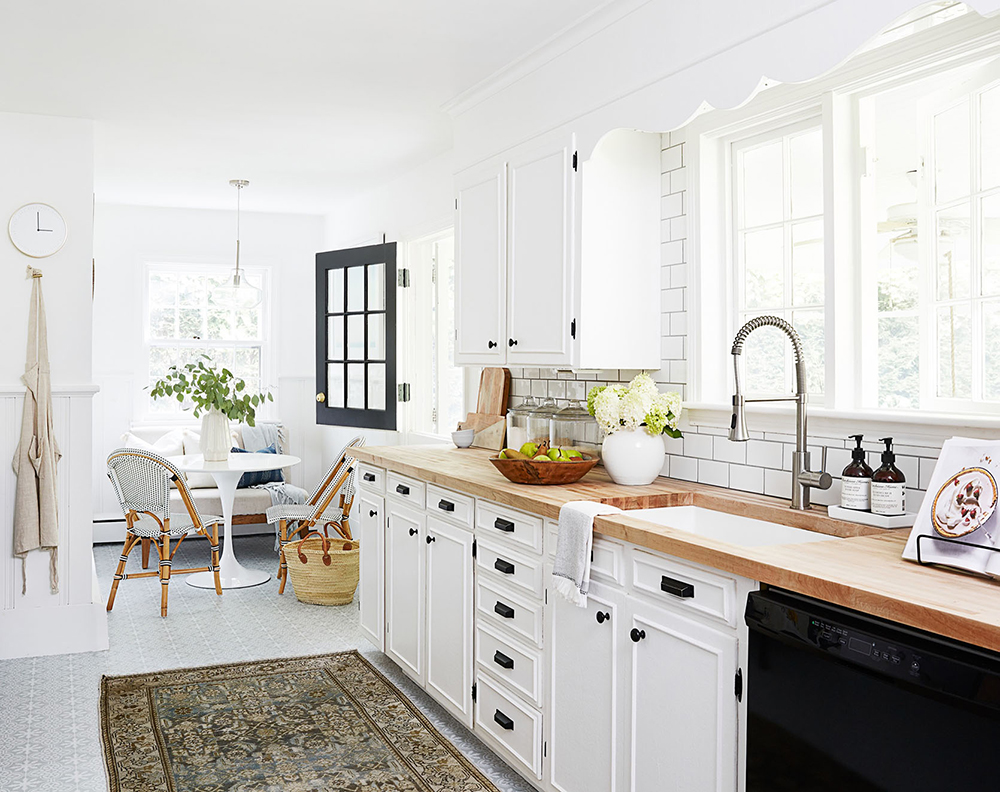
Key was an instant, unanimous pick from the team. She’s an incredible interior photographer in her own right, but we knew once we read her writing and peeked at her own DIY rental renovations – that’s her kitchen above – that she would be the next big thing. She’s warm and creative but she’s also detail-oriented with a perfectionist mindset, which is what it takes to make and shoot and share beautiful spaces for the internet!
We’ll be making her office over – the periwinkle one I shared above – and we’re so excited to work with KILZ because it’s actually covered in oil-based paint, which you can’t cover without using a specialty primer. We’ll have an official update in a few weeks, but I can share the general design direction which is going to knock your socks off…
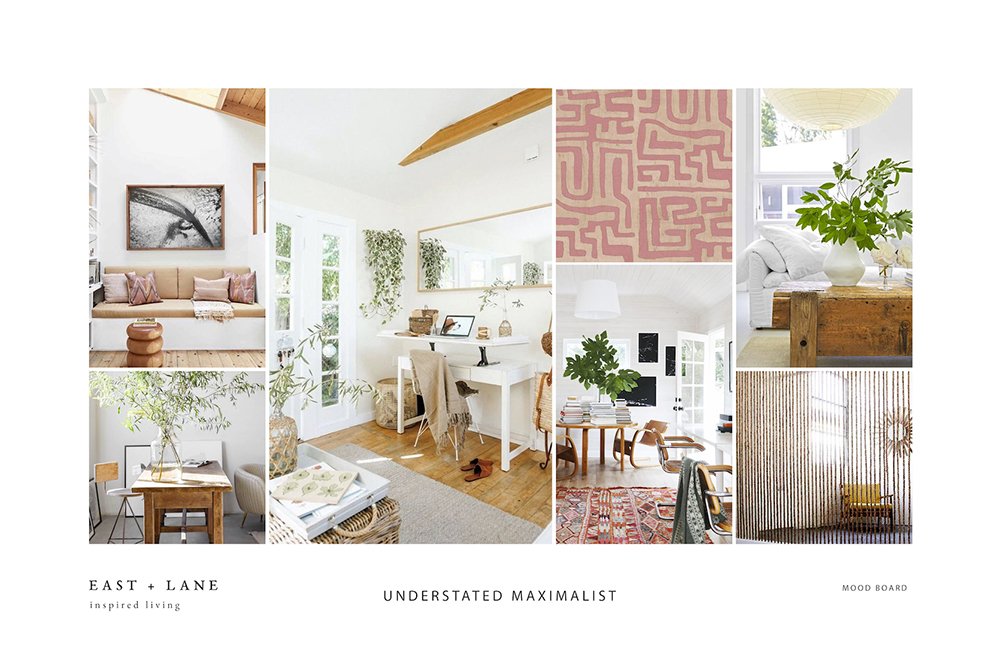
My team and I have been working with Key to secure all the main furniture pieces and BOY, they’re great. (Also, do you see that rope wall partition on the bottom right? It’s so good, isn’t it?) I know it’s only February, but I have a feeling that this is going to be one of our top makeovers of the year. We’re so thrilled to reveal it to you all and so grateful that KILZ has given us the opportunity to work on such a fun project, together. Cheers to beautiful and multifunctional rooms in 2021!
Author is paid sponsor of KILZ Primer. Always remember to refer to our website kilz.com or product back labels for additional information on which primer is right for your project and detailed instructions on how to apply our products.
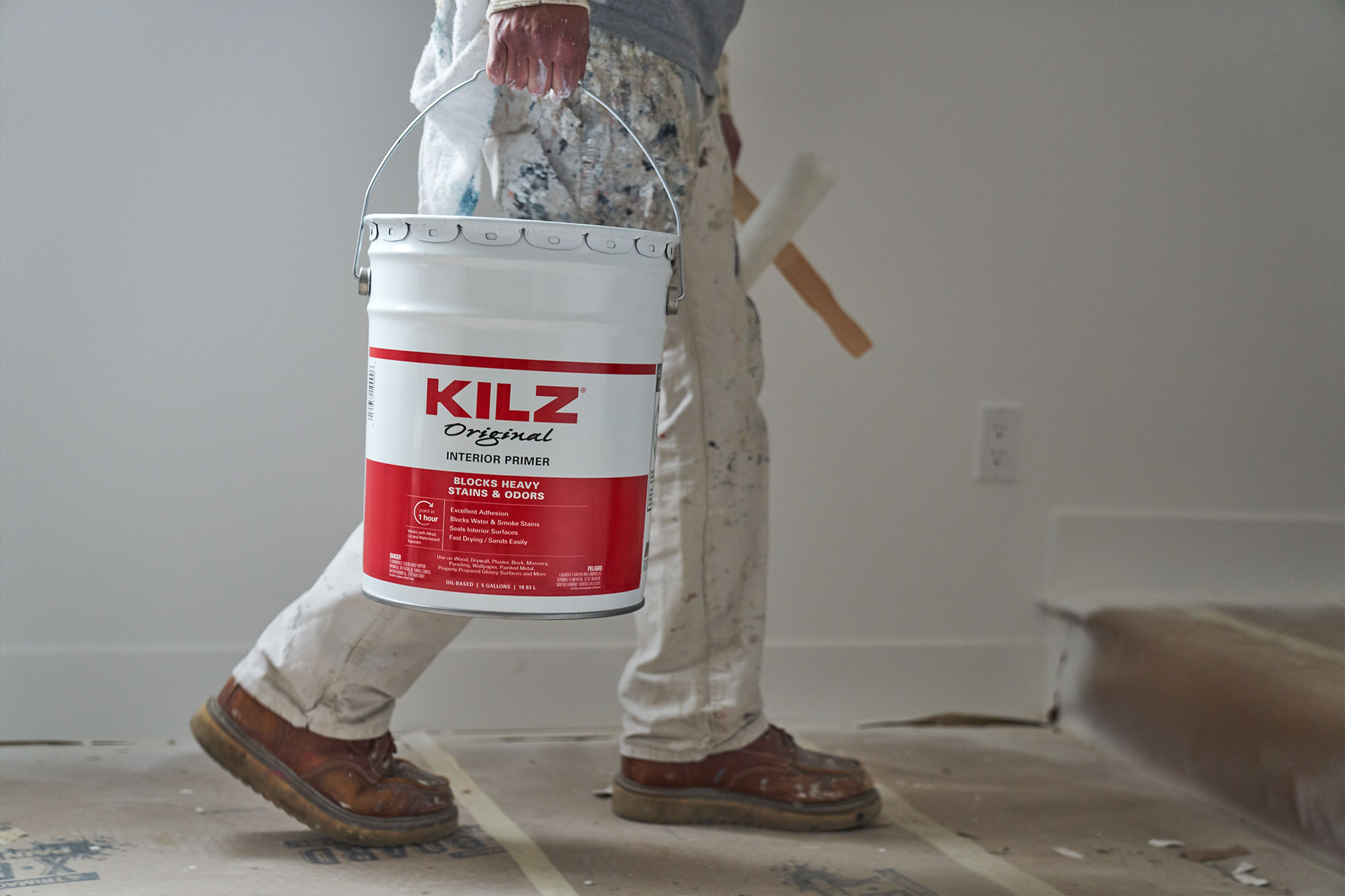
Ask the Pro: Misconceptions About Primer and How Many Coats of Primer To Use
February 12, 2021
Here on The Perfect Finish, we’ve shared what primer can do for your paint job, tips on choosing the right primer for your project and step-by-step instructions on how to prime various surfaces. In this post, we’re excited to turn the tables and talk about what primer is not – debunking seven common misconceptions about primer.
To discuss these often-believed myths and misunderstandings about primer, we sat down with John Golamco – Product Manager, Primers at KILZ. A member of the KILZ team for over six years, John is a true expert on all things primer and has a wealth of knowledge to share. Ready to learn more? Let’s get rolling!
Misconception #1: Primer is just paint without color in it.
Although both primer and paint are classified as “architectural coatings” they are not the same. The formula of paint is different from the formula for primer. Paint is formulated to deliver color while primer is formulated to stick, better protect the surface, and in some cases block stains.
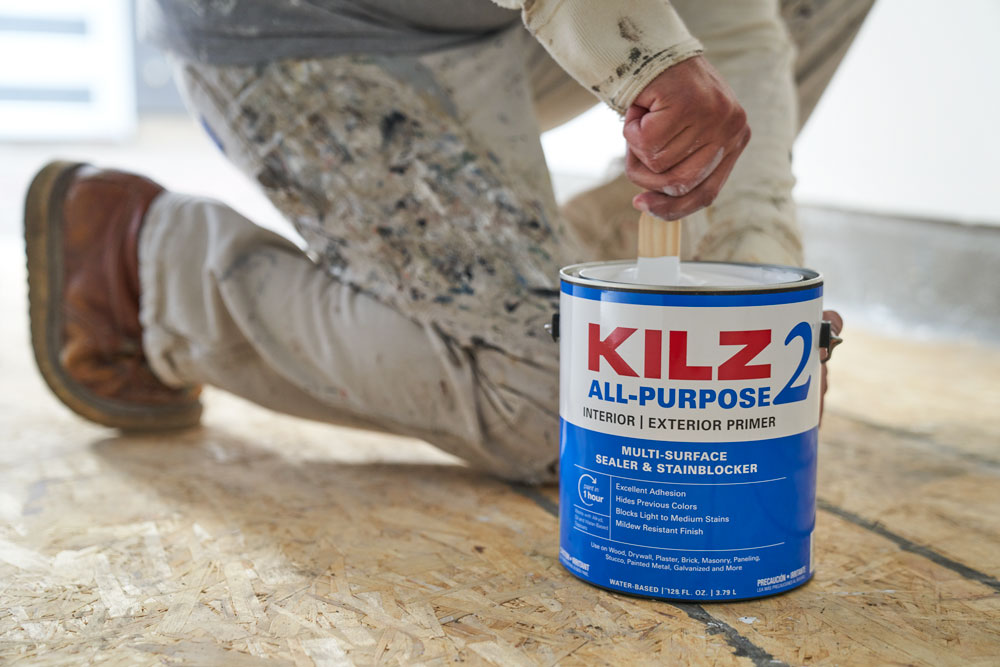
Misconception #2: Priming before painting takes too much time and won’t have a considerable effect my paint job.
Applying primer is indeed an additional step in the painting process but, depending on the surface condition and problem areas that might be present, investing in the primer step might actually save time and money. Applying primer to solve the problem (for example uneven, porous surfaces, strong colors or stains that might bleed through the paint, or adhesion issues that might cause peeling of the paint) before applying paint may prevent the need to re-paint or add several more coats of paint to get desired results.

Misconception #3: If I use primer over a stain and I can still see the stain through the coat of primer, the primer didn’t work.
This is a quite common misconception about primer. A primer coat or coats is not meant to look like the finished topcoat paint. Primer is supposed to work underneath the paint to create a uniform surface, hiding strong or bright colors, block stains that might bleed through or show through the paint and enhance the paint’s ability to stick to the surface better and last longer. So even if the primer coat does not look like a fully painted wall, it will still perform the above functions. Then it is the paint’s job to completely cover the surface, deliver the color and look great.
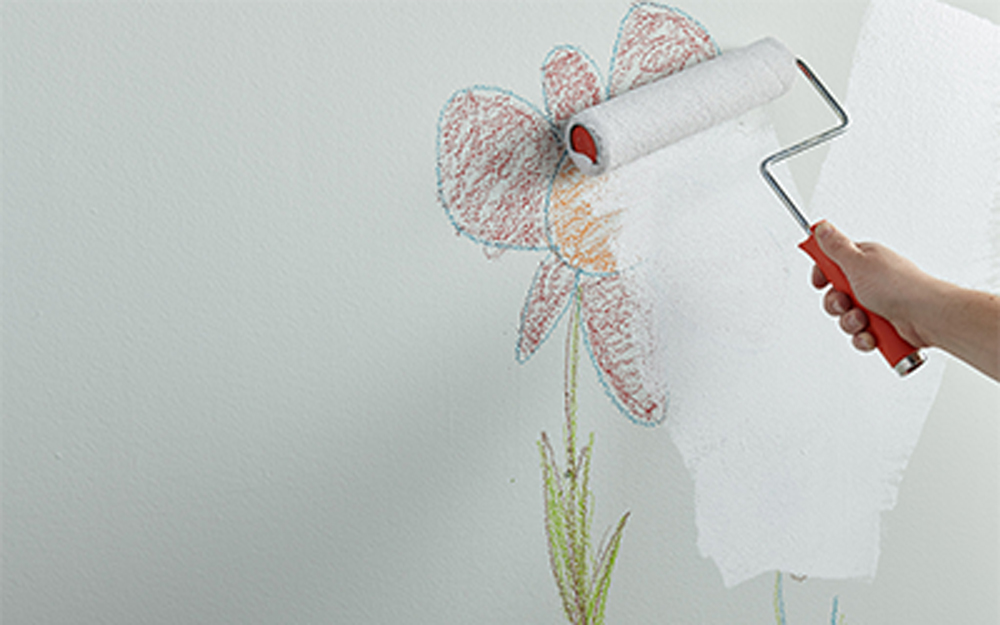
Misconception #4: Primer is only for the walls.
Primer is mainly applied to walls, but it is not only used for that surface. It can also be used on other vertical surfaces like wood paneling, brick or stone fireplaces or other masonry. Some types of primers are also designed to apply to horizontal surfaces like furniture, windowsills, floors and countertops. It depends on the type of primer and where it is designed to be used for – always read the label and follow label instructions.
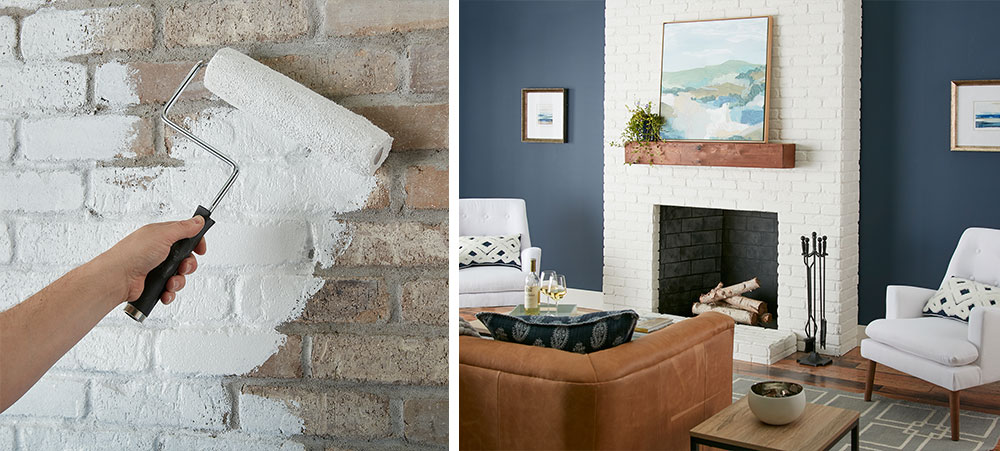
Misconception #5: I’m using primer, I don’t need to clean the surface first.
It is always important to properly prepare the surface before applying primer. At the very least, the surface has to be clean and free of dust, dirt and debris. Failing to clean the surface prior to applying primer may compromise the adhesion of the primer to the surface – which could lead to peeling and blistering.
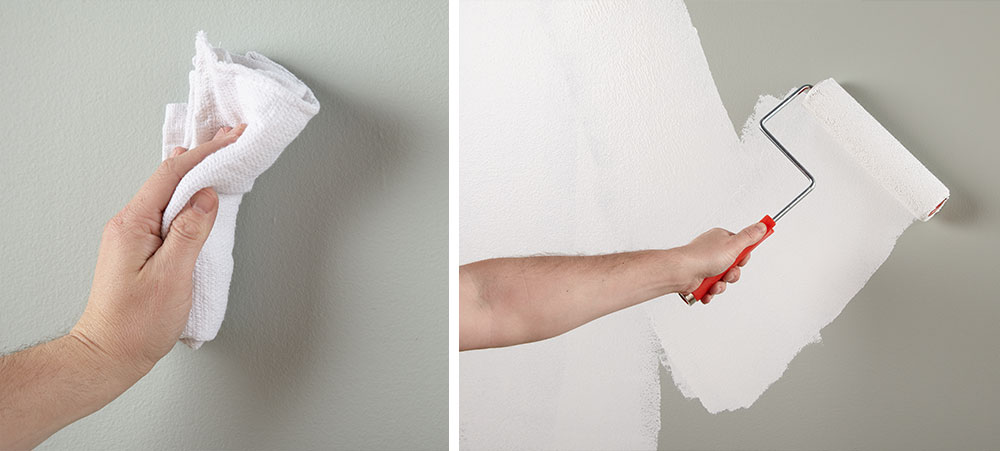
Misconception #6: I need to add multiple coats of primer if I can still see my previous color.
Depending on how strong or bold the previous color is, it may be necessary to apply more than one coat of primer. However, it is not necessary to over apply the primer with so many coats. As long as the primer applies uniformly over the previous color, then one or two coats should be sufficient. Again, it is not necessary to apply several coats of primer to try to get a perfect white finish. That is the job of the topcoat (paint) which has to be applied on top of the primer.
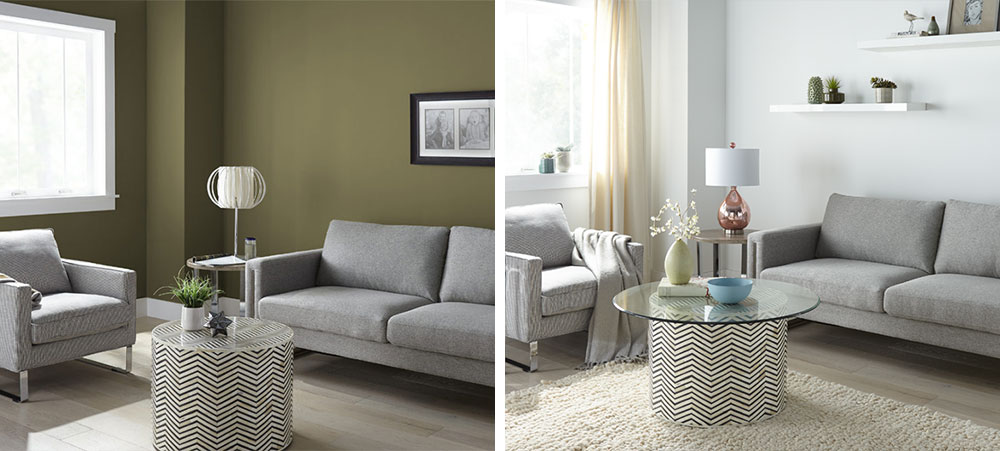
Misconception #7: I don’t need to prime when painting outside.
Priming outside is just as important, if not more important, than priming inside. Exterior surfaces are typically exposed to the elements and are subject to expansion (from heat) and contraction (from cold). This and the exposure to wind, rain, snow and even dust, dirt, pollution, sunlight (UV) may cause the paint to fail due to lack of adhesion to the surface. Using an exterior primer first on a properly prepared surface can make a big difference to whether the paint lasts or potentially cracks, peels or blisters after a short period of time.
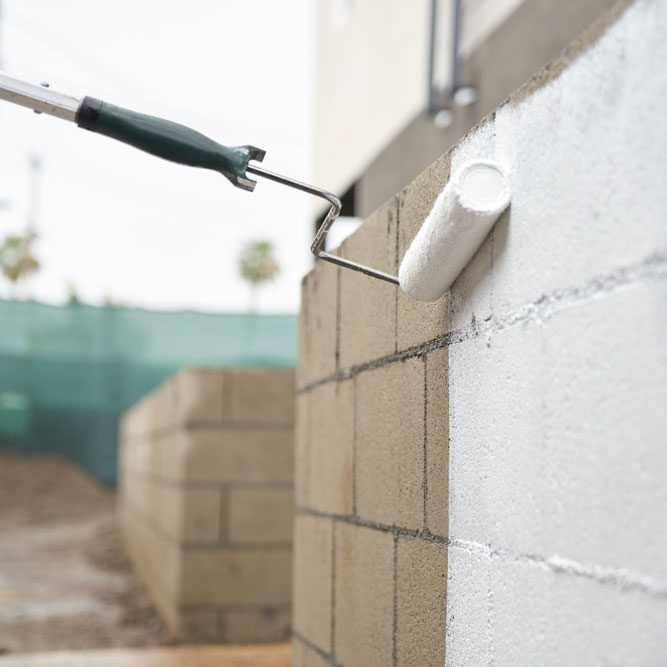
Always remember to refer to our website kilz.com or product back labels for additional information on which primer is right for your project and detailed instructions on how to apply our products.
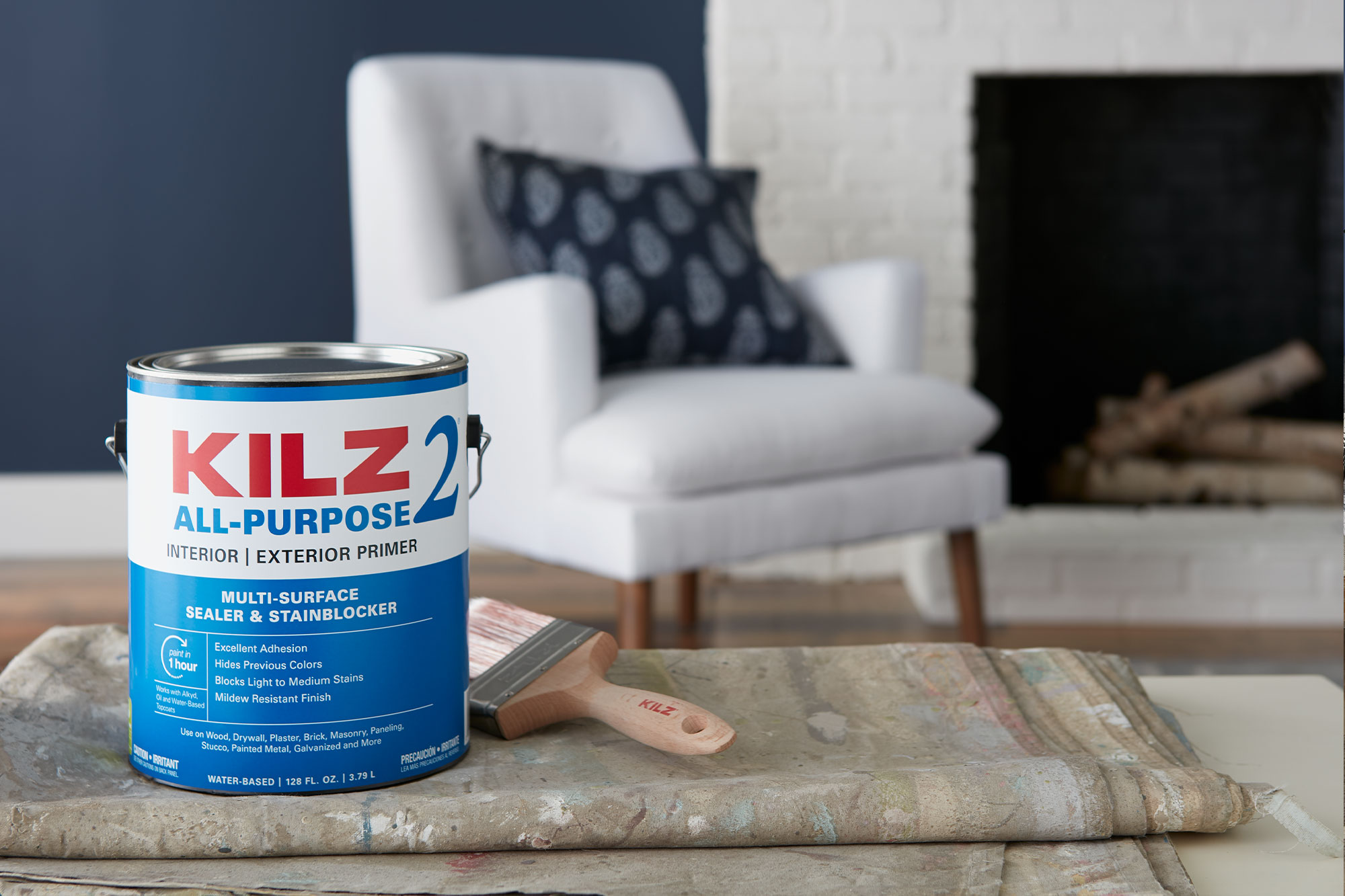
5 Things Primer Does for Your Paint Job
January 19, 2021Primer and paint belong together. A match made in design-heaven, primer helps paint to be the best it can be and is key to getting professional quality results. Read on below to learn five things primer does for your paint job and get inspiration for your next painting project.
Primer Makes Your Paint Job Durable
Over time, fluctuating temperatures and humidity levels can make paint peel. For spaces where this is normal like kitchens, using KILZ 3® Premium Primer (known for its exceptional adhesion and durability) before you paint can help ensure your paint job lasts longer. See the full kitchen transformation with step-by-step instructions here.
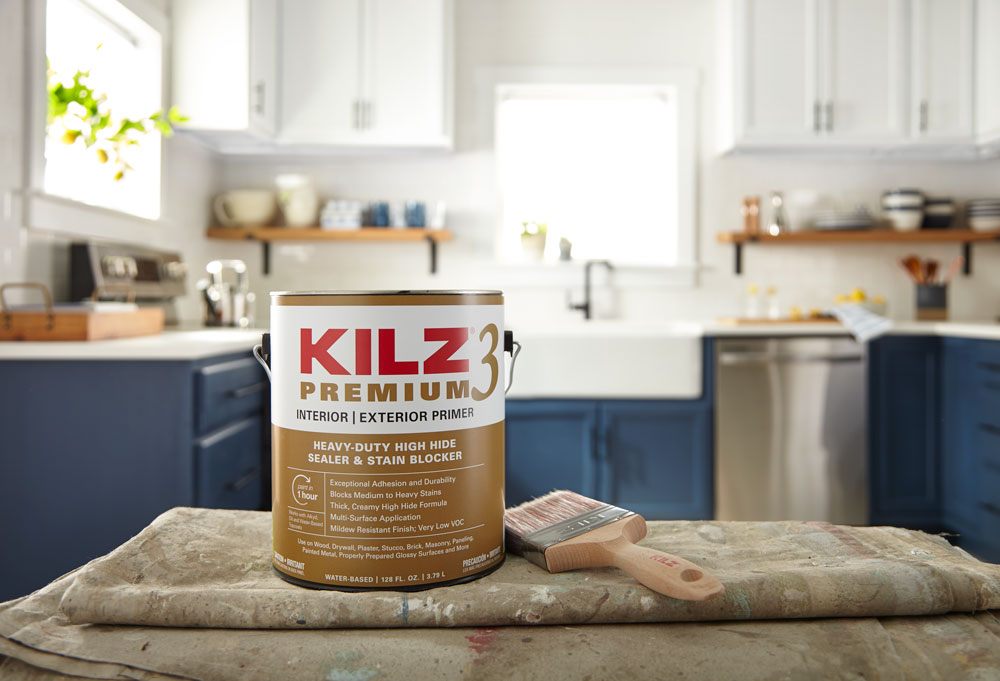
Primer Seals and Blocks Stains
If you have a wall with unpleasant stains, for example smoke stains from a previous homeowner in a bedroom, KILZ® Original Primer with its powerful stain blocking formula is the one for the job. See how we freshened up a mid-century modern bedroom with primer here.
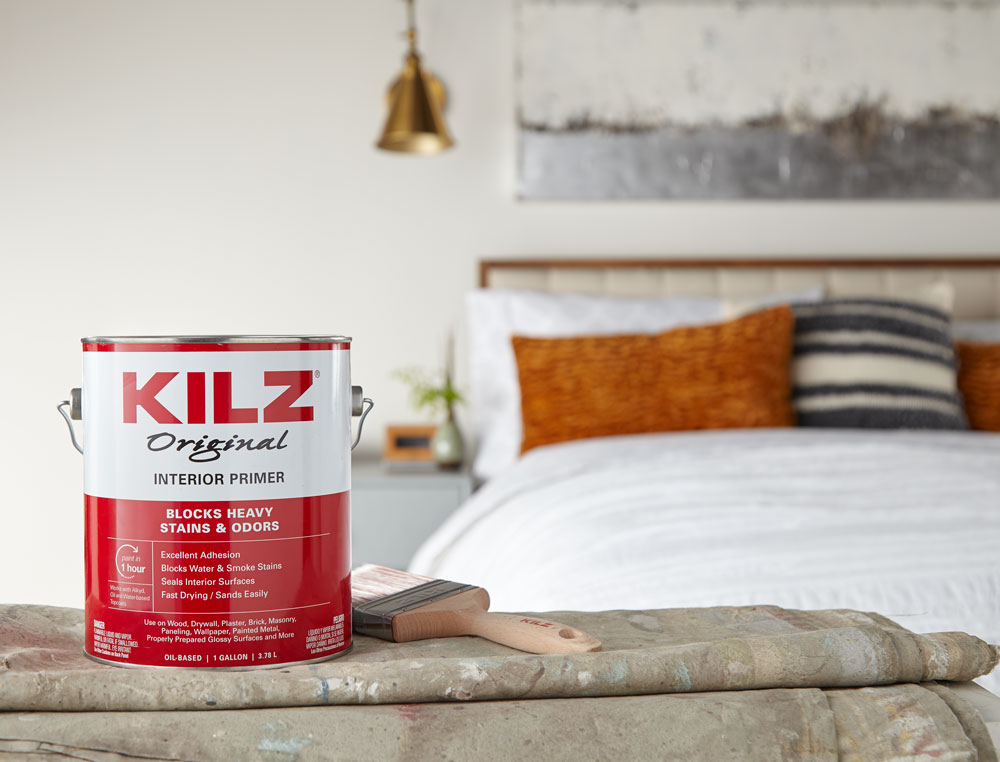
Versatile Multi-Surface Sealer
When you want to paint a porous surface like brick, you want a primer that seals the surface. KILZ 2® All-Purpose Primer is a versatile multi-surface sealer perfect for the task. See how a freshly primed and painted fireplace pops against on-trend navy walls in this post.
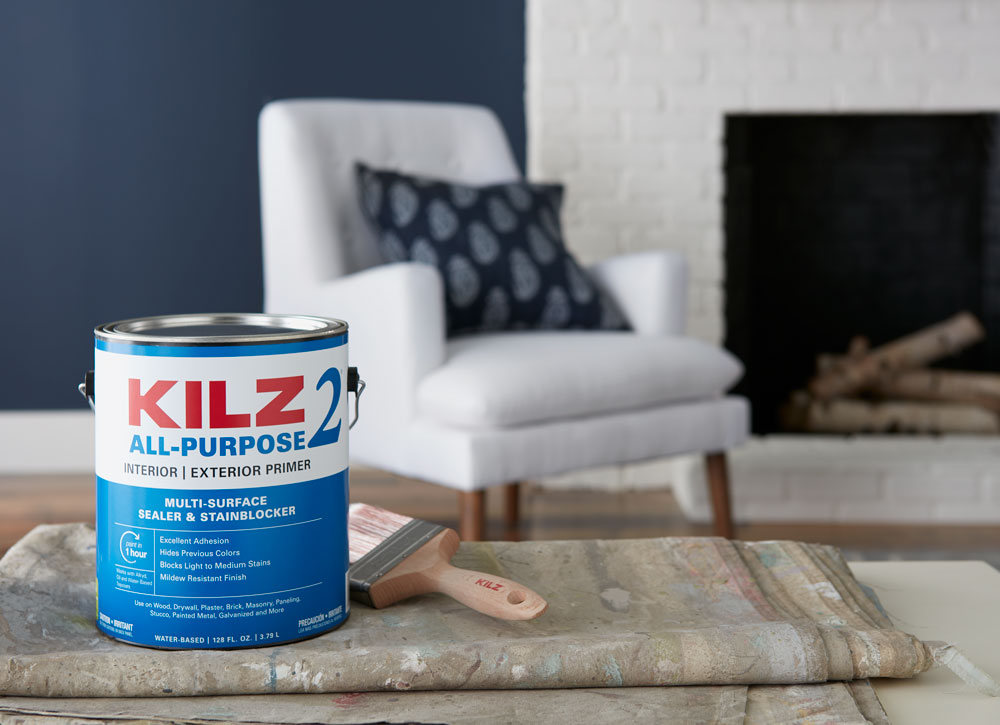
Primer Hides Dark Colors
When you’re applying a new paint color, the last thing you need is your old color seeping through. That’s why KILZ 3® Premium Primer is a great primer choice when going from a darker color to a lighter color. It hides dark colors and creates the perfect base for your new topcoat paint. See how KILZ primer turned a dark spare room into a sunny and sweet nursery here.
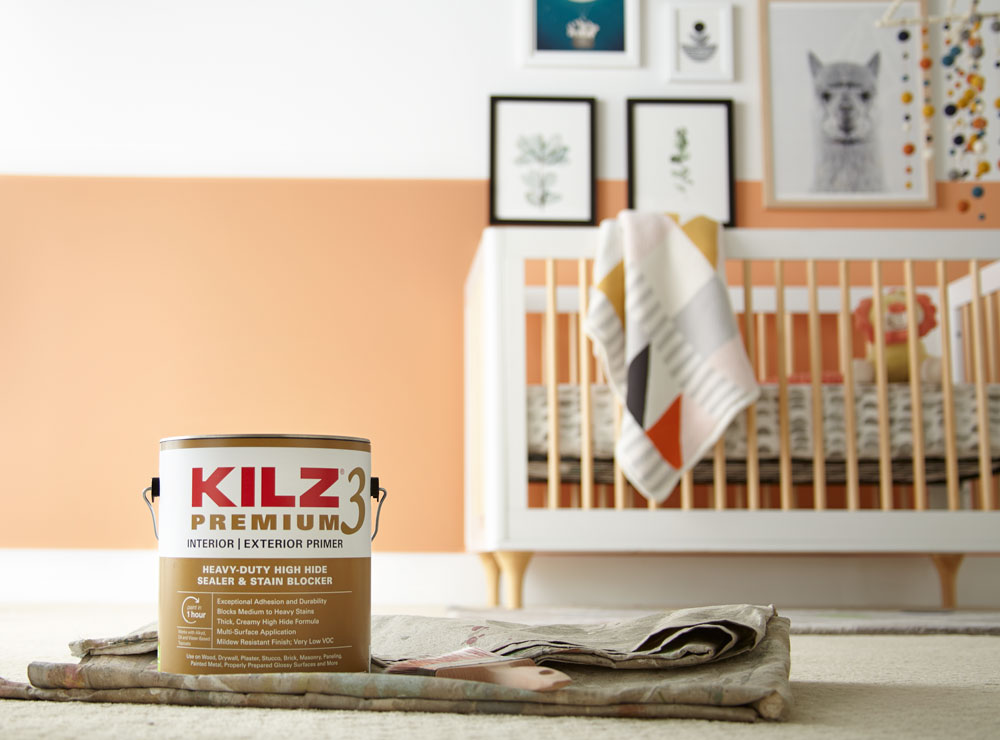
Primer Has a Mildew Resistant Primer Finish
In high humidity areas, like bathrooms, KILZ® Kitchen & Bath Primer is up to the task. It dries with a mildew resistant primer finish that helps protect and support paint. See the full bathroom transformation here.
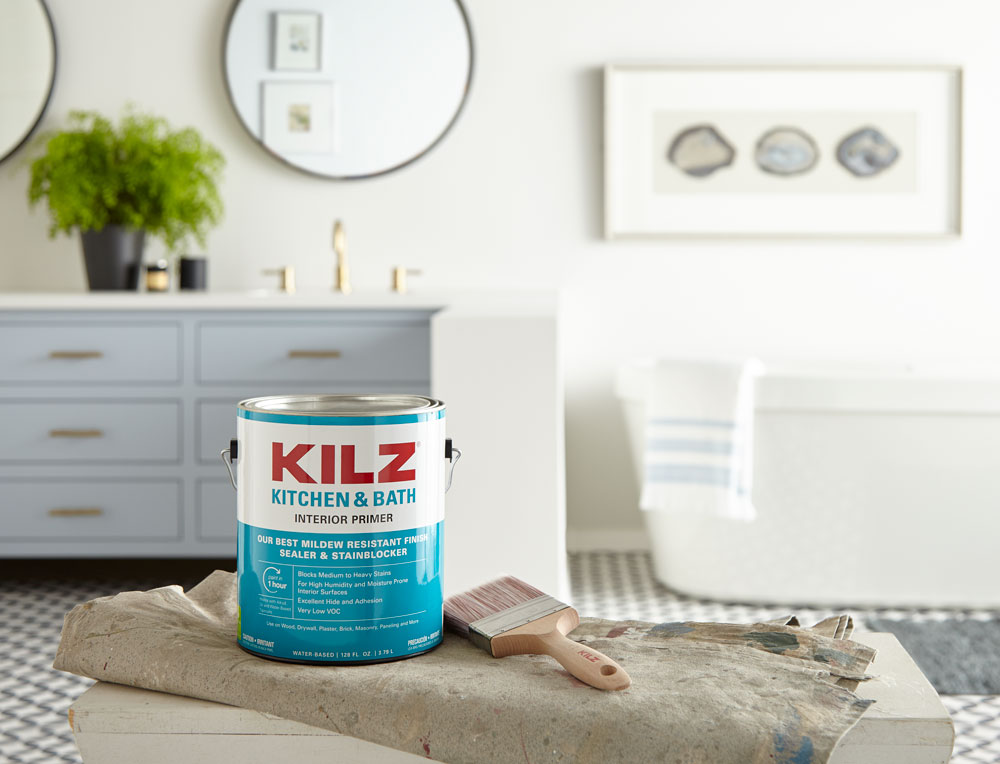
Always remember to refer to our website kilz.com or product back labels for additional information on which primer is right for your project and detailed instructions on how to apply our products.
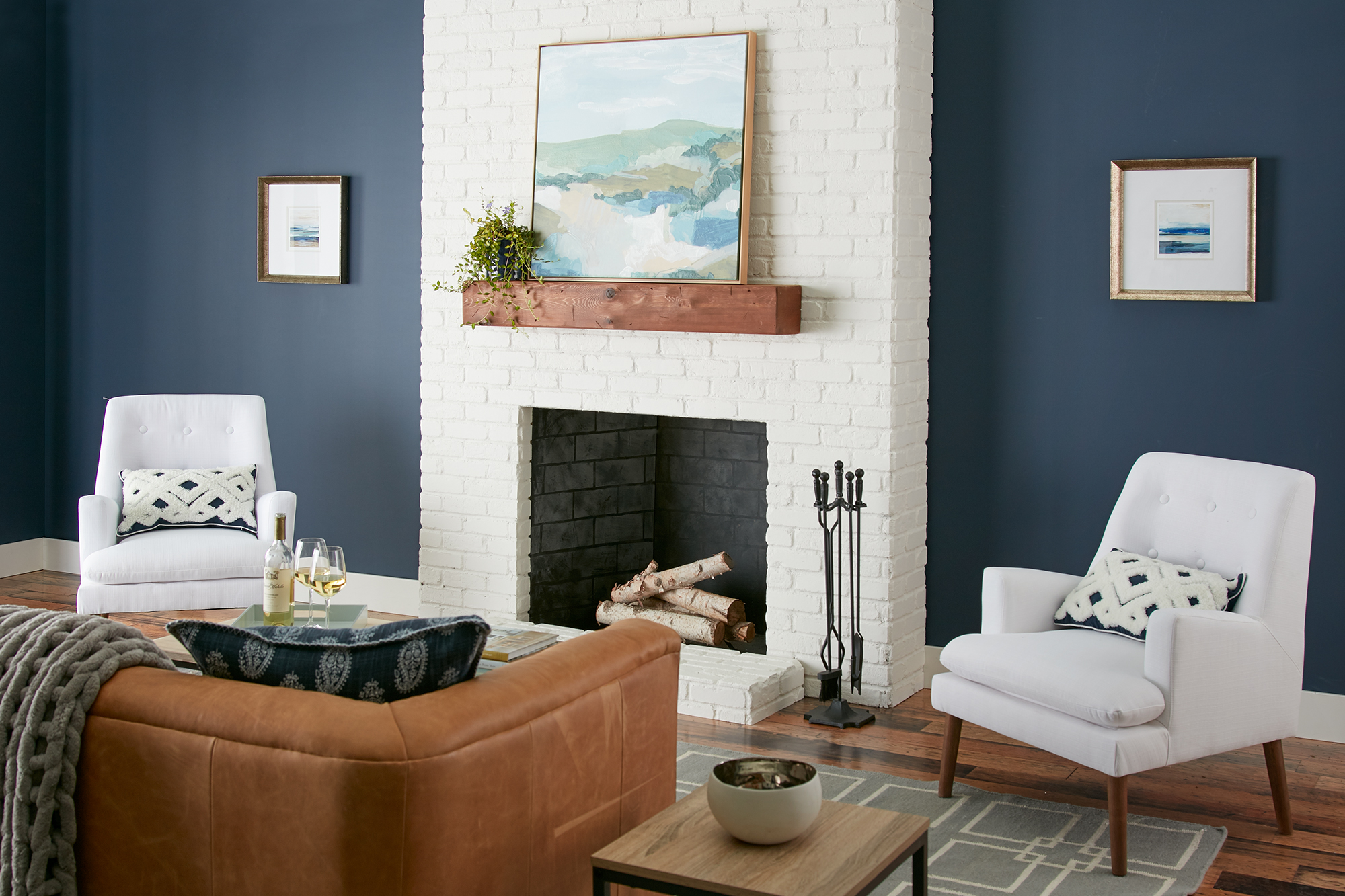
Mid-Century Modern Living Room Makeover
January 19, 2021A lackluster living room is warmed up with new modern design elements, including a spark of mid-century style and a freshly primed and painted fireplace that pops against on-trend navy walls. For this painting project that includes sealing porous brick and covering an old wall color, KILZ 2® All-Purpose primer is perfect for the job as it’s formulated for a variety of surface types.
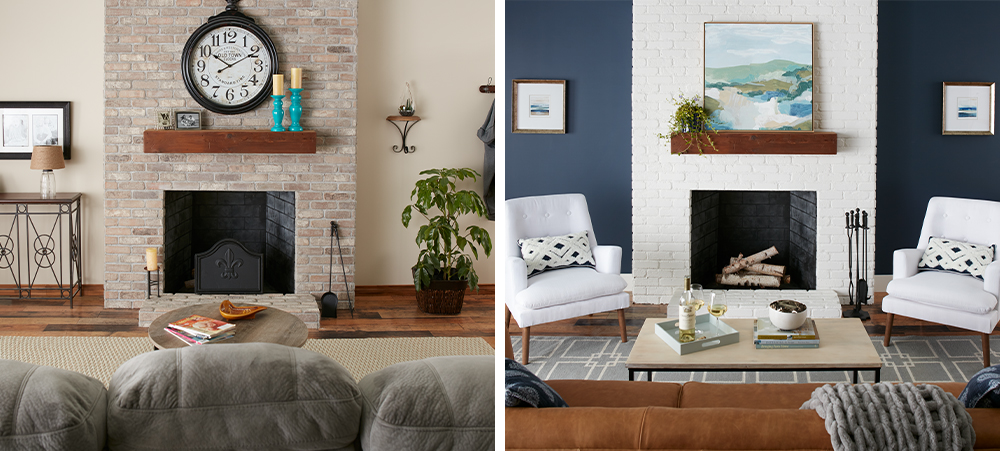
Brick is a naturally porous surface and will typically soak up a lot of paint if not properly sealed with the right primer, making proper prep essential when painting a fireplace. KILZ 2 All-Purpose is the right choice for the job, as the versatile multi-surface sealer is able to work overtime and coat both the fireplace and walls. Even when painting a darker color over a light color, it is essential to prime first to ensure that the new dark shade appears as the exact color you’re expecting.
Once the fireplace and walls are properly primed and allowed to dry, it’s time for paint! KILZ Tribute® in Architectural White TB-08 transforms the fireplace into a creamy white focal point for the large living room, highlighted by walls painted in a stylish navy shade – Ruling Royalty TB-50.
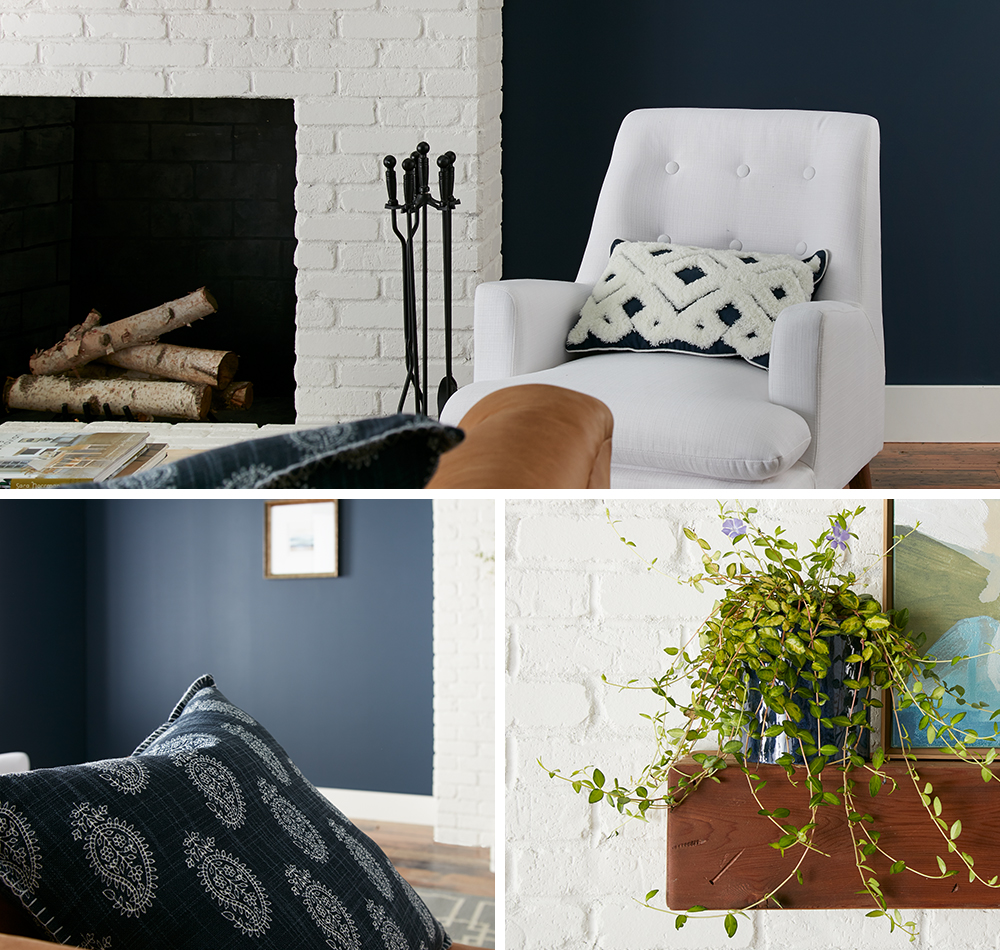
Primer and paint make a huge impact in this living room makeover and create the perfect setting for contemporary furniture and décor. A warm leather couch and two snowy-white armchairs flanking the freshly painted fireplace evoke a mid-century feel, while pops of navy in pillows and artwork are the perfect companion for the new navy walls.
Read on below for step-by-step instructions to prime and paint living room walls and a brick fireplace.
WALLS
Step 1:
Wipe down walls with a damp cloth to ensure they are clean and free of dust. Allow to dry.
Step 2:
Tape around the fireplace, baseboards and moldings with painter’s tape to ensure you don’t get primer or paint where you don’t want it!
Step 3:
Next, apply 1 coat of KILZ 2® All-Purpose (stirring thoroughly before and occasionally during use) to the walls and allow to dry. Apply primer using a brush first to “cut in” around the edges, then use a roller to fill in.
Step 4:
Once primer is dry, apply KILZ Tribute® in Ruling Royalty using the same application method as the primer (using a brush first to cut in around the edges 4 to 6 feet at a time, then use a roller to fill in those sections before moving along).
Step 5:
Remove the tape before the paint is fully dry.
FIREPLACE
Step 1:
First, you’ll want to clean the old brick fireplace. If it’s extra dirty, start with a vacuum and use the crevice tool attachment to clean between the bricks. Next, wipe down the fireplace with a damp cloth to ensure all surfaces are clean and free of any lingering dust. Allow to dry.
Step 2:
Tape around the fireplace to protect the walls and floor. Also tape around the mantel and where the brick meets the firebox (the inside where the wood goes!) to keep that area protected from paint and primer.
Step 3:
Now it’s time to prime! Using KILZ 2® All-Purpose primer, start with an angled brush to cut in around the mantle.
Step 4:
Next, use a roller to cover the brick faces with primer. If needed, go back with a small angled brush to fill in any remaining grout areas. Allow to dry.
Step 5:
Once your primer is dry, apply KILZ Tribute® in Architectural White using the same application method as the primer (use a brush first to cut in and then use a roller).
Step 6:
Remove the painter’s tape before your paint is fully dry.
Always remember to refer to our website kilz.com or product back labels for additional information on which primer is right for your project and detailed instructions on how to apply our products.
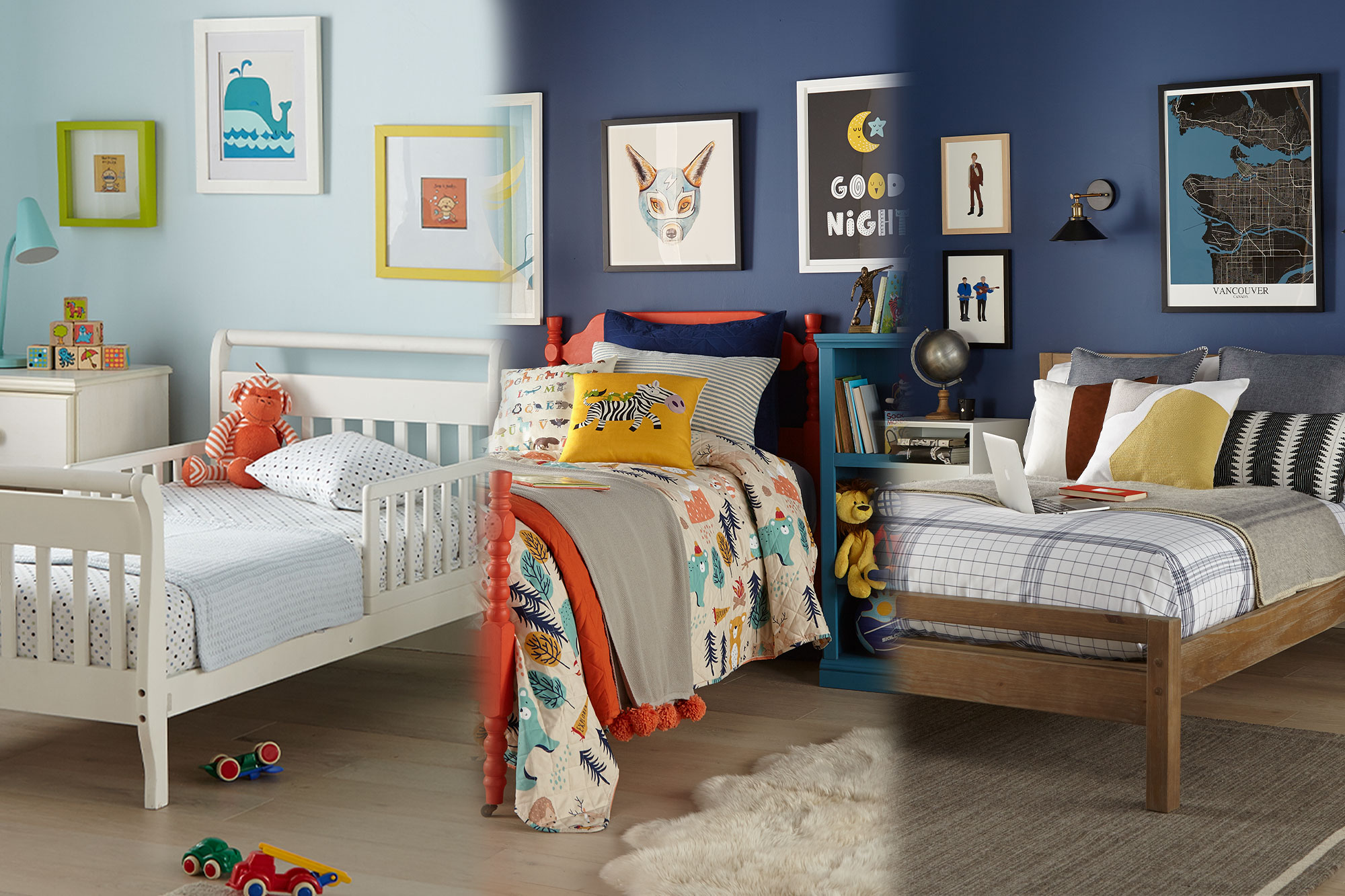
Bedroom Grows from Toddler to Teen
January 8, 2021When a little one was ready to graduate from his toddler bed to a big kid bed, it meant it was also time to take his bedroom walls from baby blue to a more mature hue that he could grow into. In addition to changing the color of the walls, it was time to cover up the marker doodles that had somehow jumped from the kid-sized art table to the wall.
To ensure the new deep ocean blue paint color would last for years to come, and also to tackle the felt marker stains on the wall, we started with KILZ 2® All-Purpose Primer. This water-based primer is a great multi-surface sealer and stain blocker, up to the challenge for light and medium stains. KILZ 2 also offers excellent adhesion, creating an ideal base for the new topcoat paint color. When priming over medium stains such as crayon or marker, it’s normal to still see a bit of the stain through the primer coat once dried. Don’t worry! The primer is still blocking the stain and it should not be visible through the topcoat of paint.
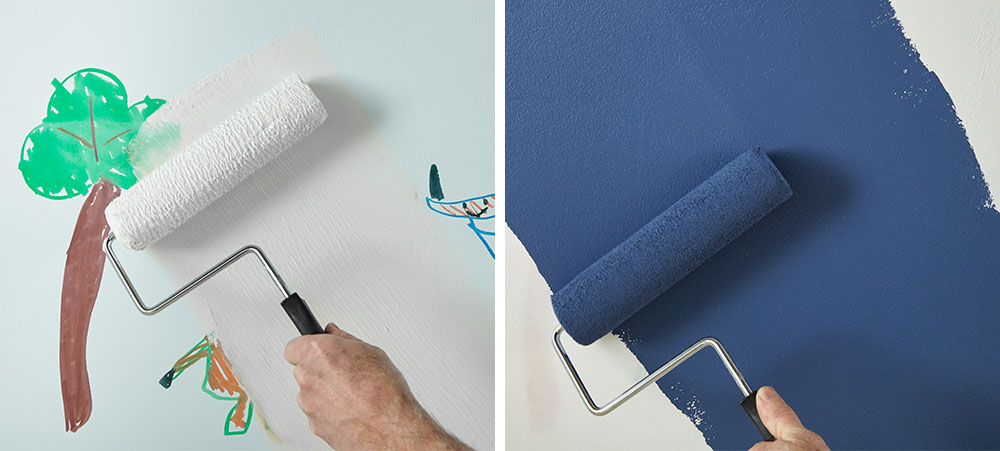
Once the primer was applied and allowed to dry, it was time to paint! We chose a deep ocean blue, BEHR Premium Plus® in Laguna Blue, that would work well in the new big kid bedroom and also be a shade he’d be sure to like as a teenager. A vibrant red bed frame, colorful bedding and whimsical artwork created a fun and welcoming space, while a chalk painted bookshelf added much needed storage for books and toys. If you’re interested to learn more about upcycling furniture with chalk paint, head over to this recent post.
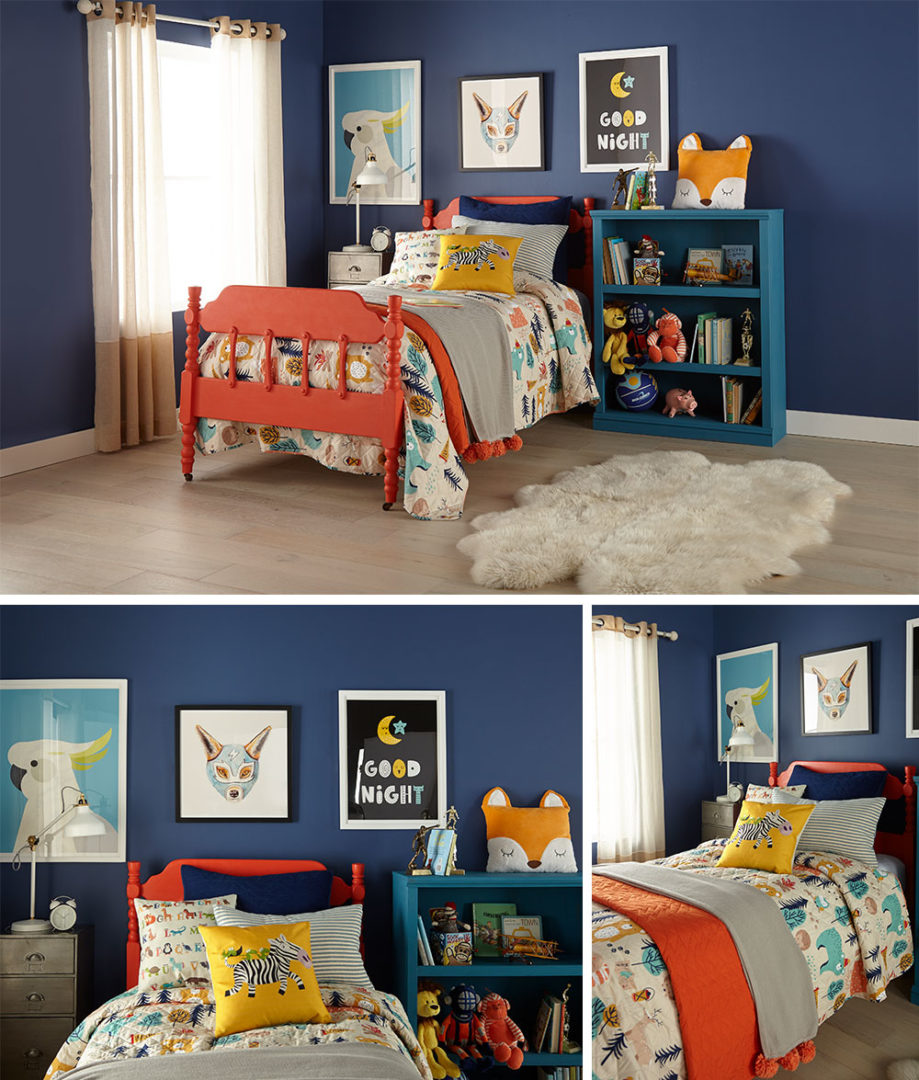 Fast forward to his teen years and the bedroom was in need of another update – bit this time around we did not need to prime or paint, since the ocean blue walls were still looking great! Bringing in new furniture was all that was required to take this space from kid-like to teenager approved. A new wood bed, neutral bedding and contemporary artwork gave the space a whole new look and feel. And the space wouldn’t be complete without a modern wood and metal desk and coordinating chair, a perfect spot to study at home.
Fast forward to his teen years and the bedroom was in need of another update – bit this time around we did not need to prime or paint, since the ocean blue walls were still looking great! Bringing in new furniture was all that was required to take this space from kid-like to teenager approved. A new wood bed, neutral bedding and contemporary artwork gave the space a whole new look and feel. And the space wouldn’t be complete without a modern wood and metal desk and coordinating chair, a perfect spot to study at home.
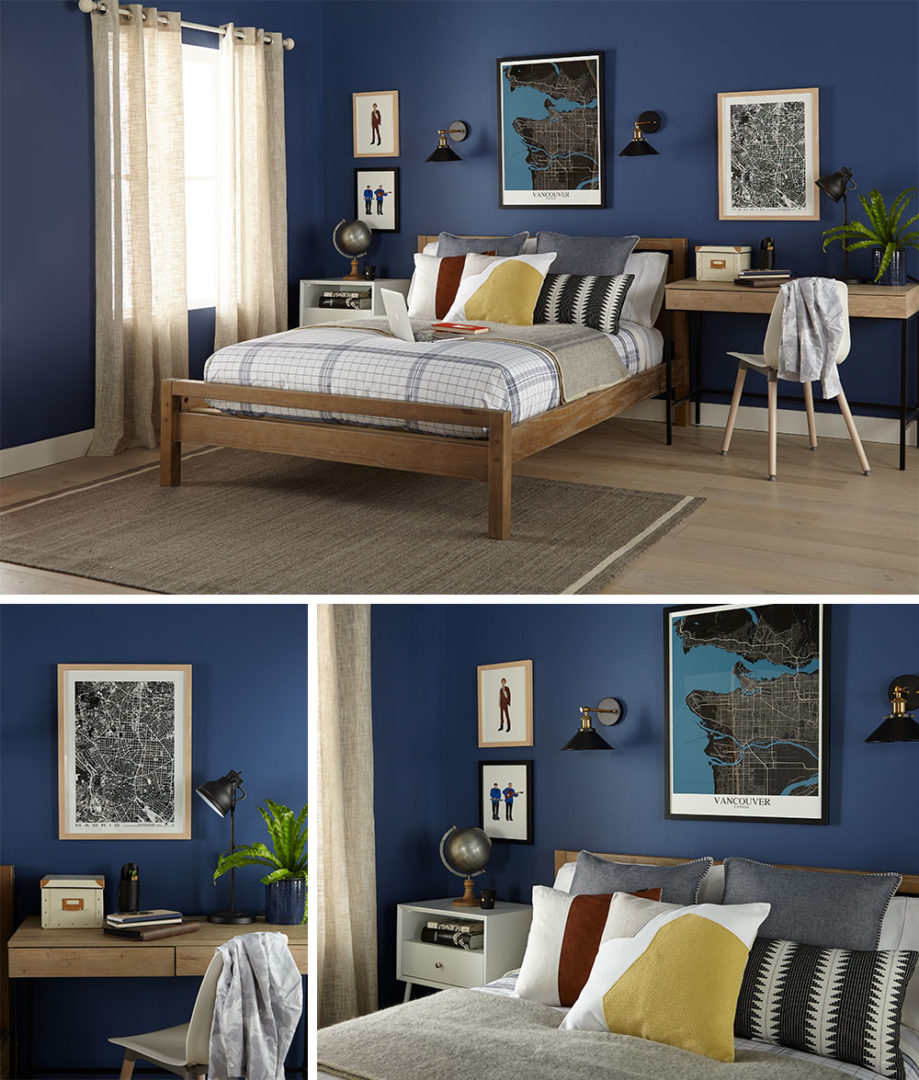
Always remember to refer to our website kilz.com or product back labels for additional information on which primer is right for your project and detailed instructions on how to apply our products.
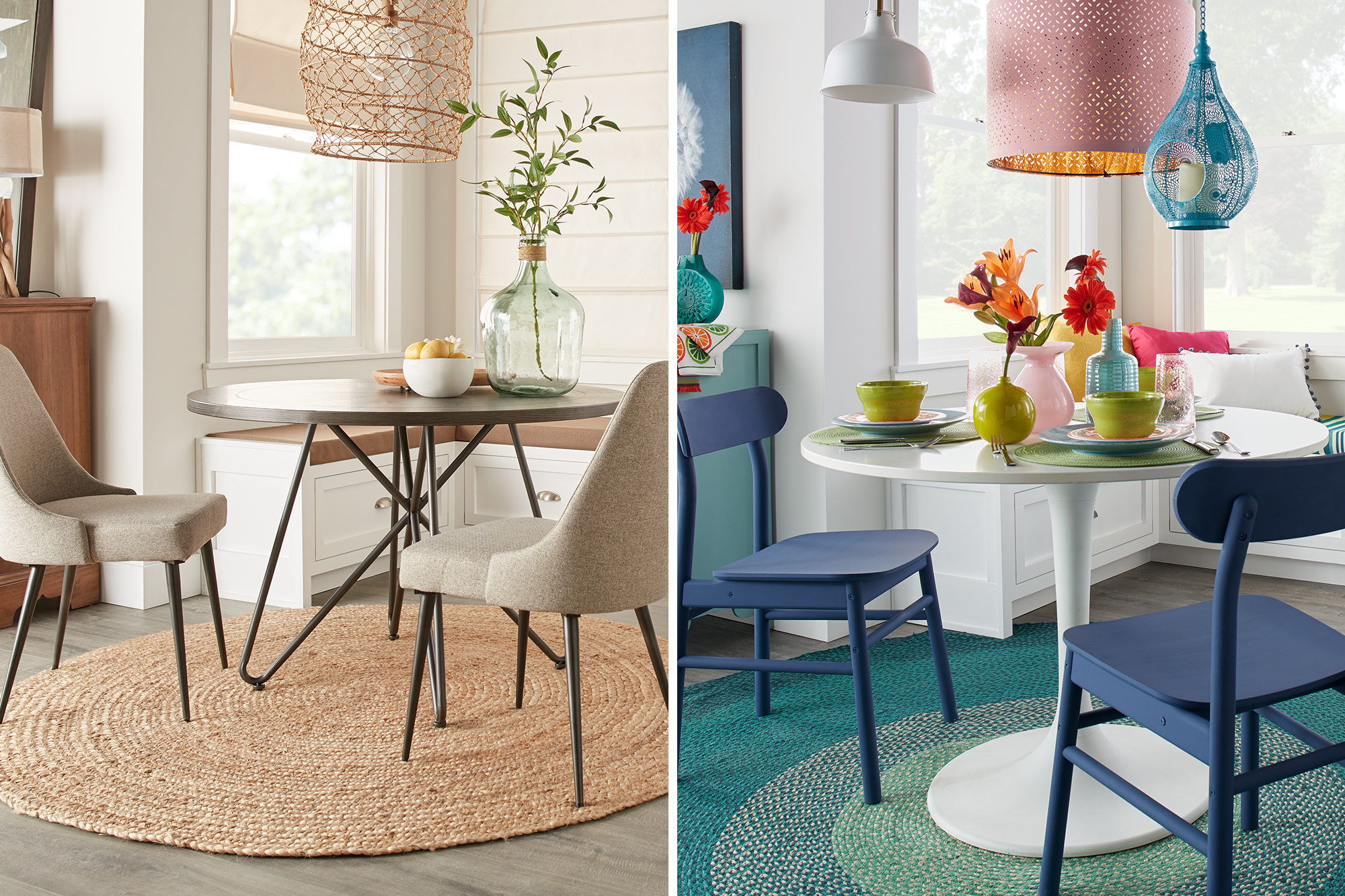
Dining Room Debate: Light or Bright?
August 11, 2020Is your dream dining room serving up pops of bright color, fun fabrics and fixtures? Or perhaps neutral tones and coastal inspired textures are your preferred dining room design menu? That is the question of this post, as we look at dining rooms styles from light to bright. No matter your style, we’re pretty sure there is one you will love!
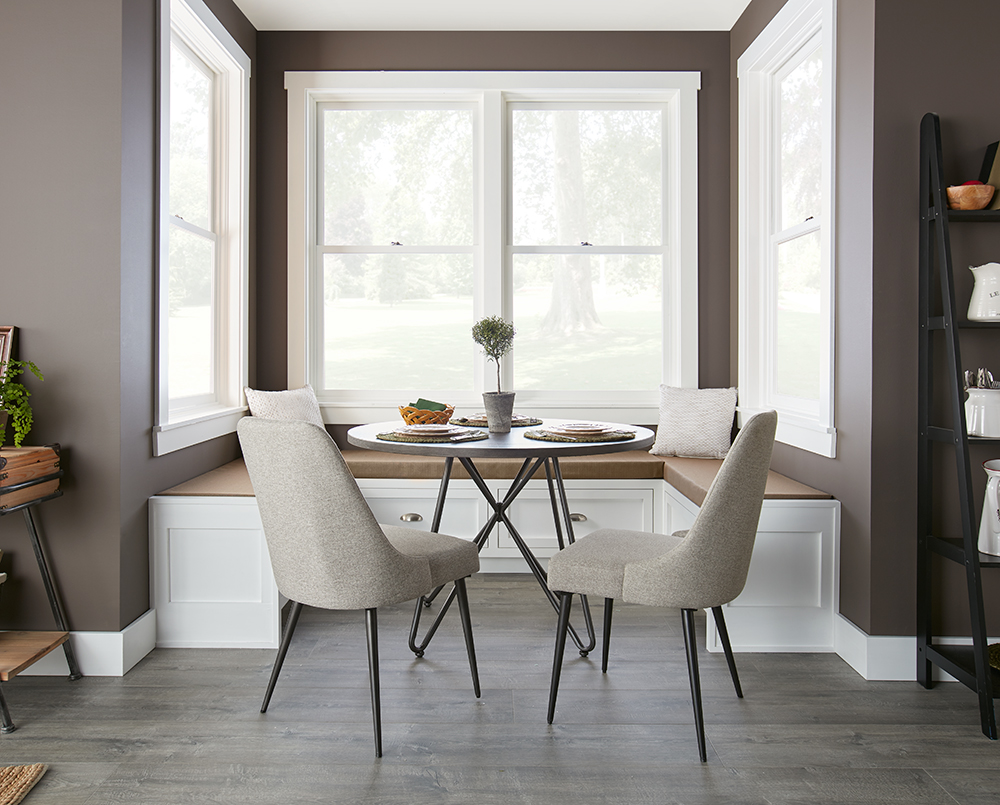
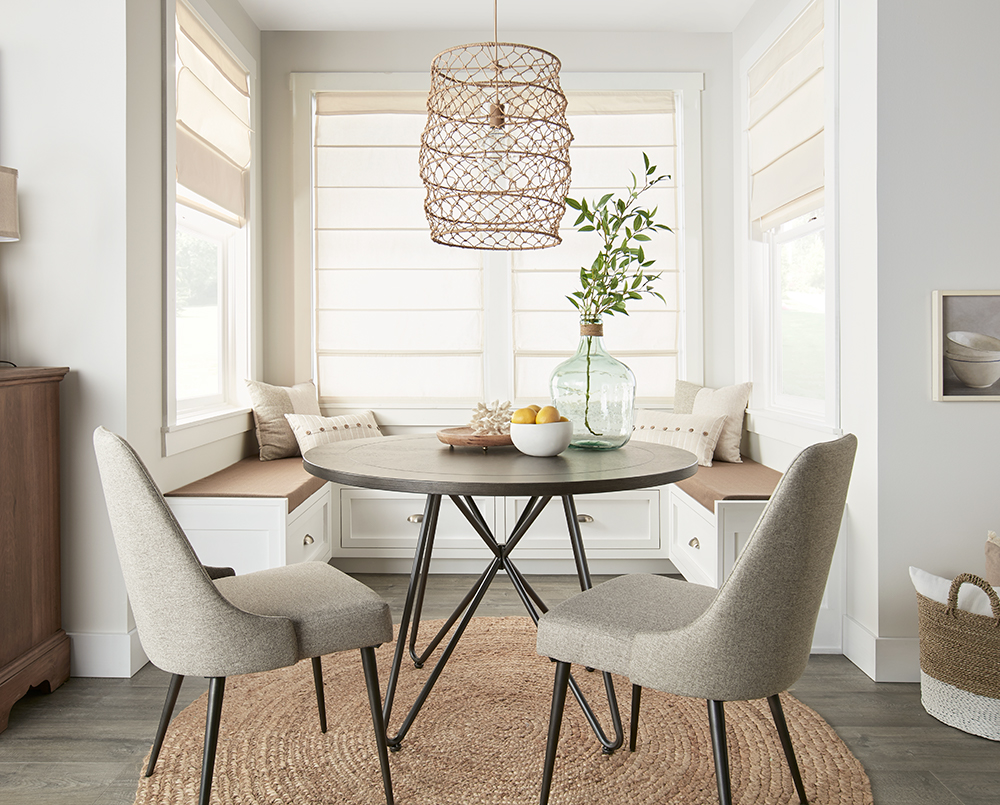
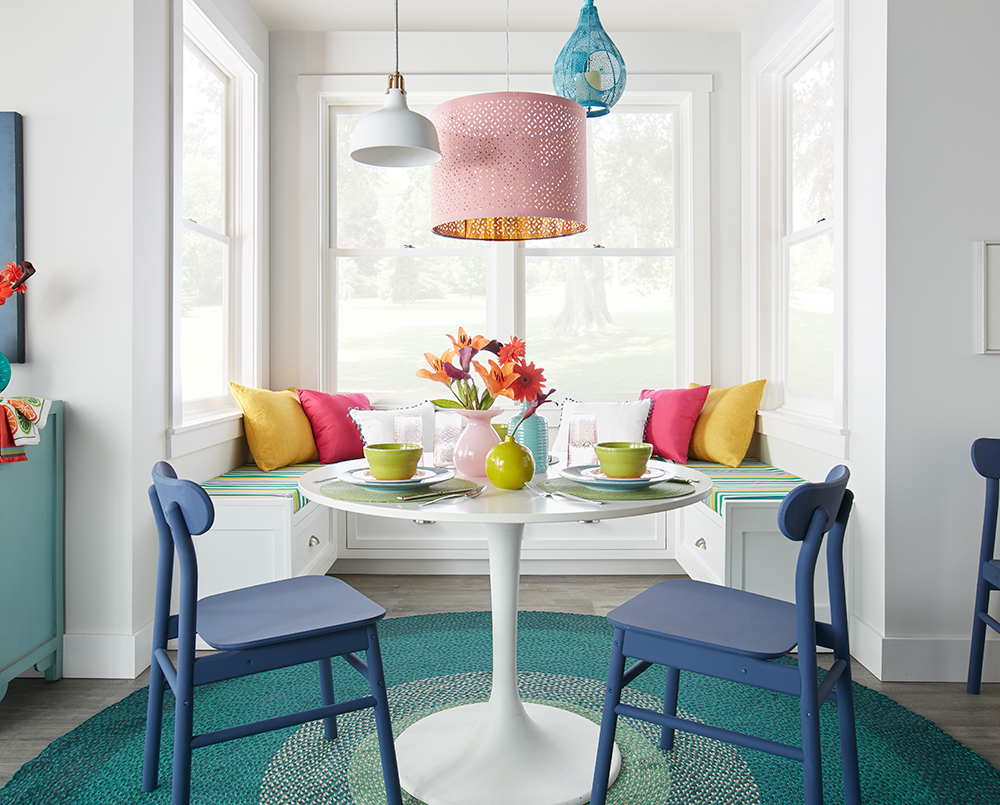
Our dining room debate arose as we started a project to refresh an adorable dining nook. We knew we wanted to take the walls from the current dirty brown shade to an airy white hue, so first it was time to prime. To cover the light brown paint color, we chose KILZ 2® All-Purpose primer. This water-based primer offers excellent adhesion and easily covers light to medium colors. After properly priming the walls (and allowing them to dry!), we top coated with KILZ Tribute® Paint in Architectural White. This sugar white shade has a cotton underdone and appears as a soft white in most light. For full step-by-step directions on covering both light and dark paint colors head over to our post Pro Tips for Painting Over a Dark or Light Wall.
The fresh white walls created a perfect blank canvas that could easily be the backdrop for a variety of color palettes. Inspired by the existing table and chairs, we started with a California Casual design style and played with neutral tones and textures. A new jute rug under the table anchored the space, while a fun basket-weave chandelier, sea-glass colored vase and ocean-inspired accessories completed the look.
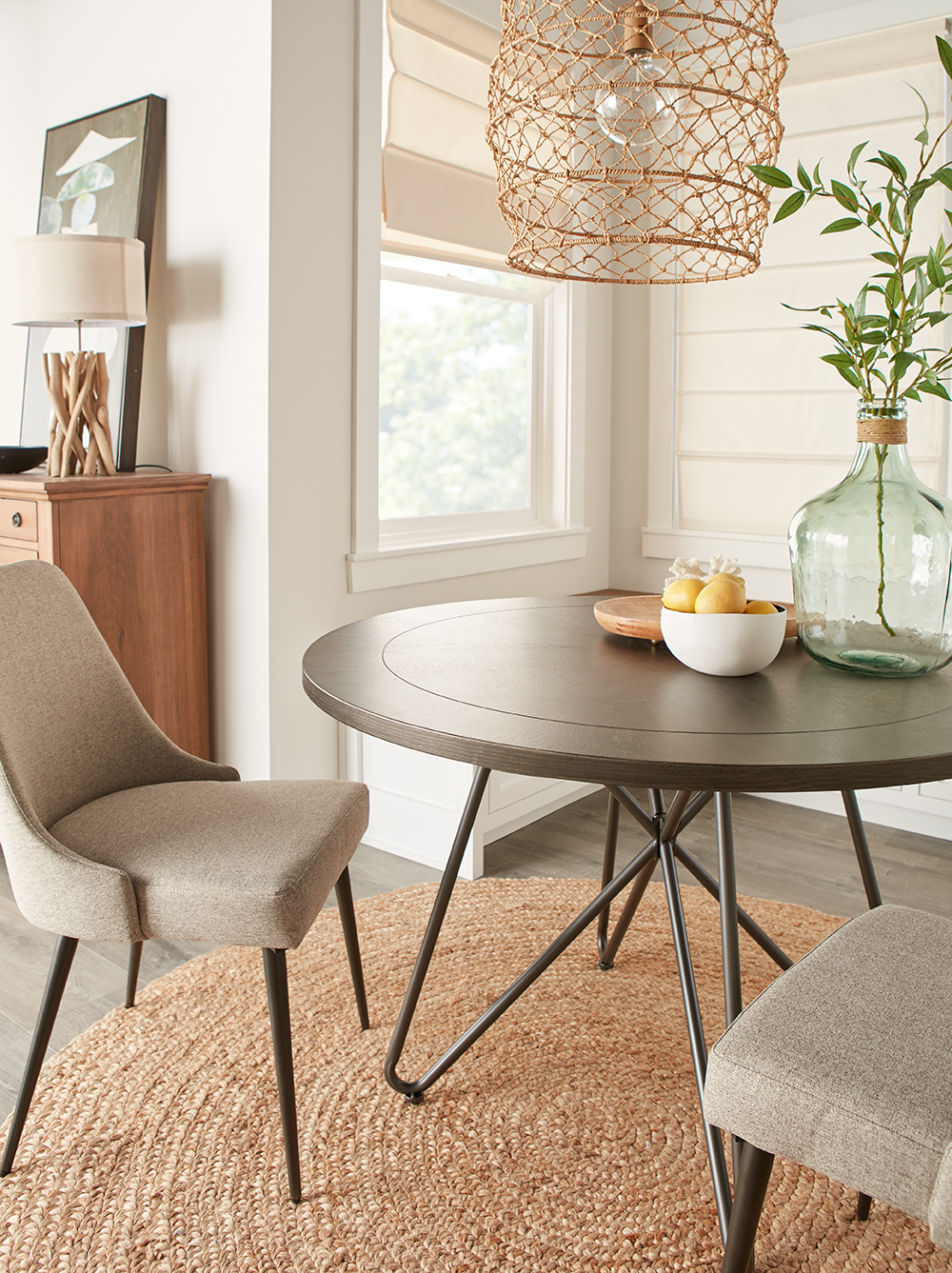
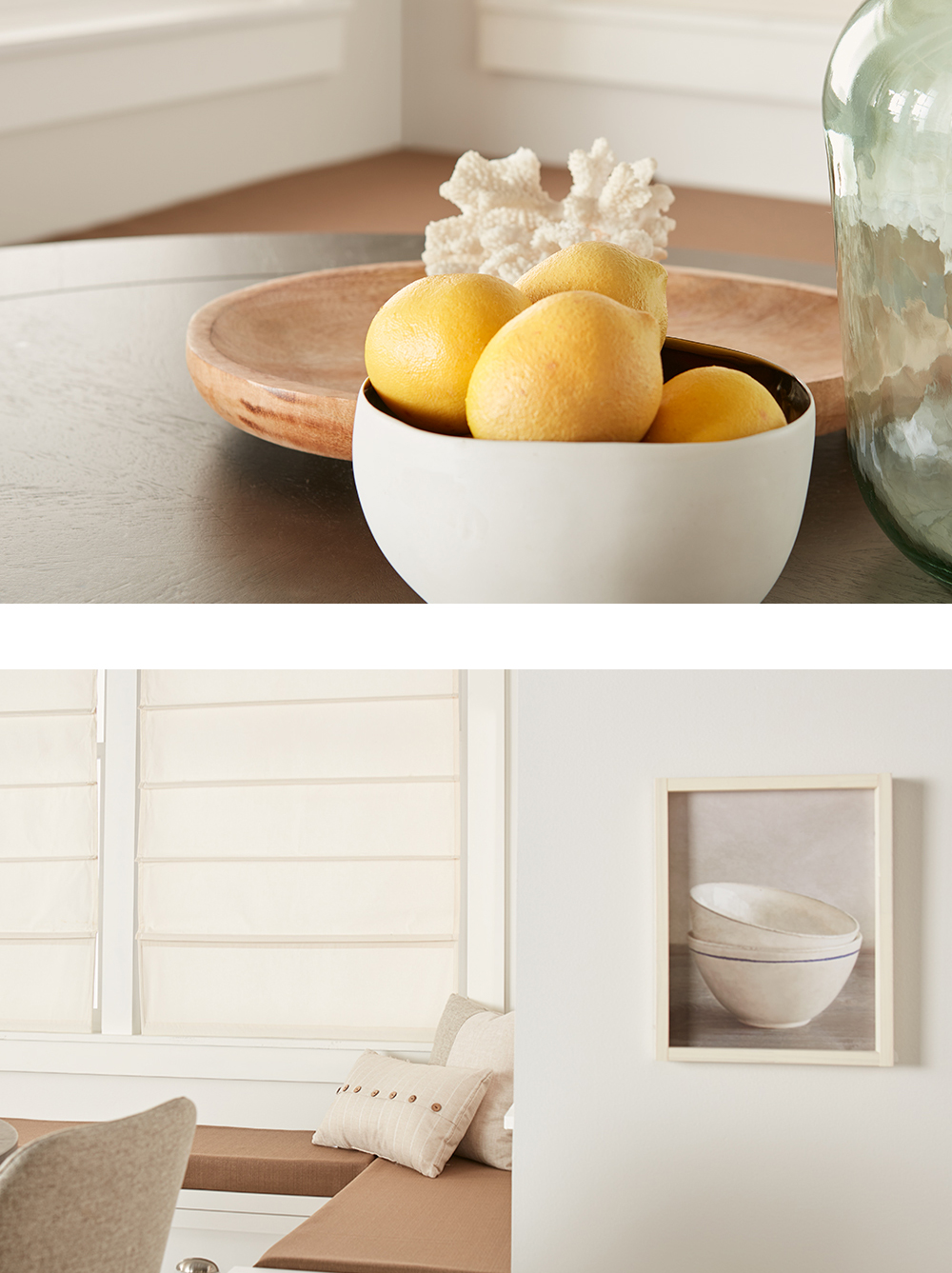
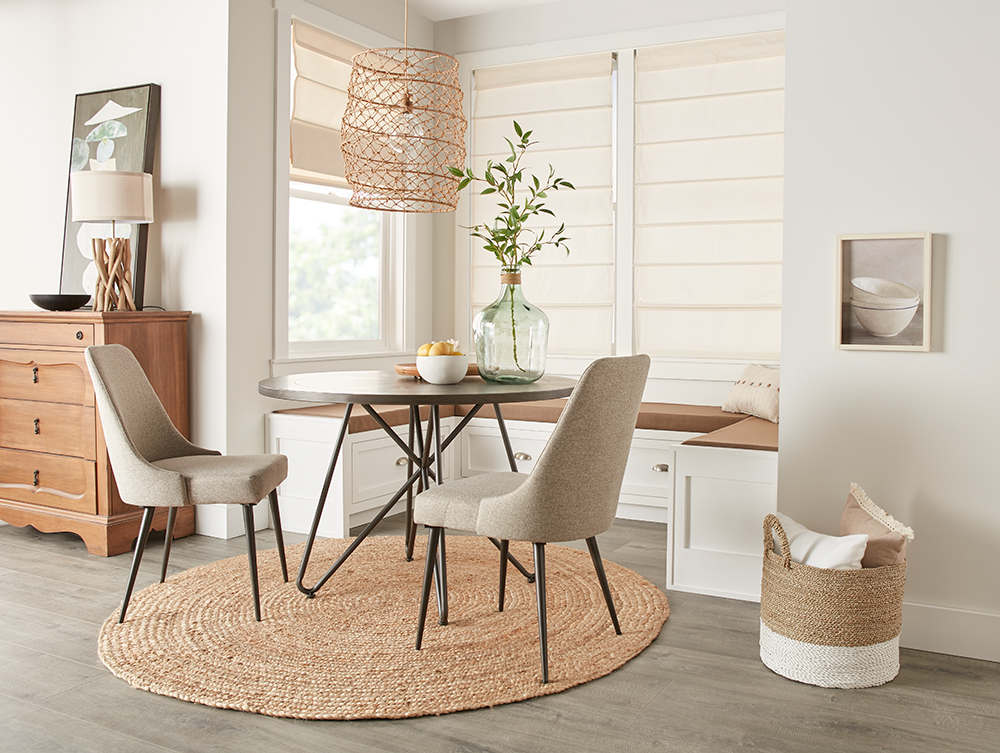
Next up, it was time to turn this style on its head and go from light to bright! We brought in a bright white table and chalk-painted blue wooden chairs and an over-sized teal rug. Striped cushions and colorful brightened up the dining bench, while an array of three playful chandeliers came together to create a fun statement chandelier.
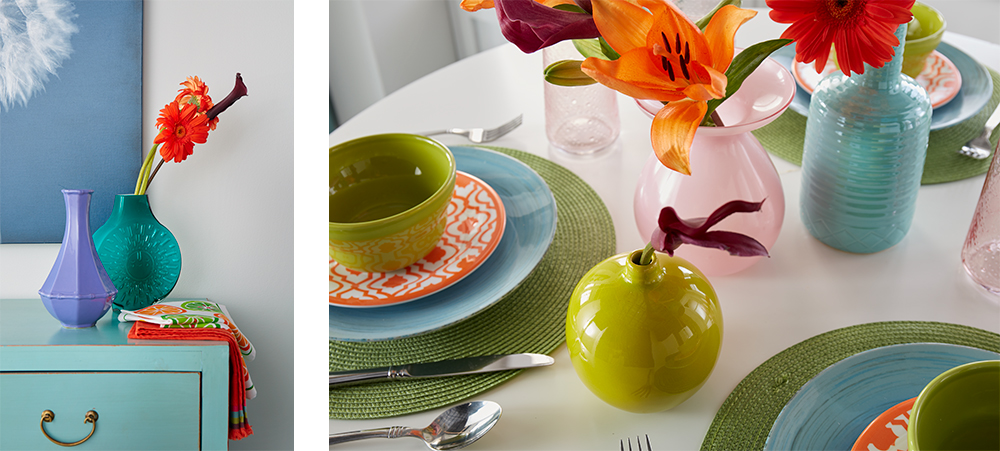
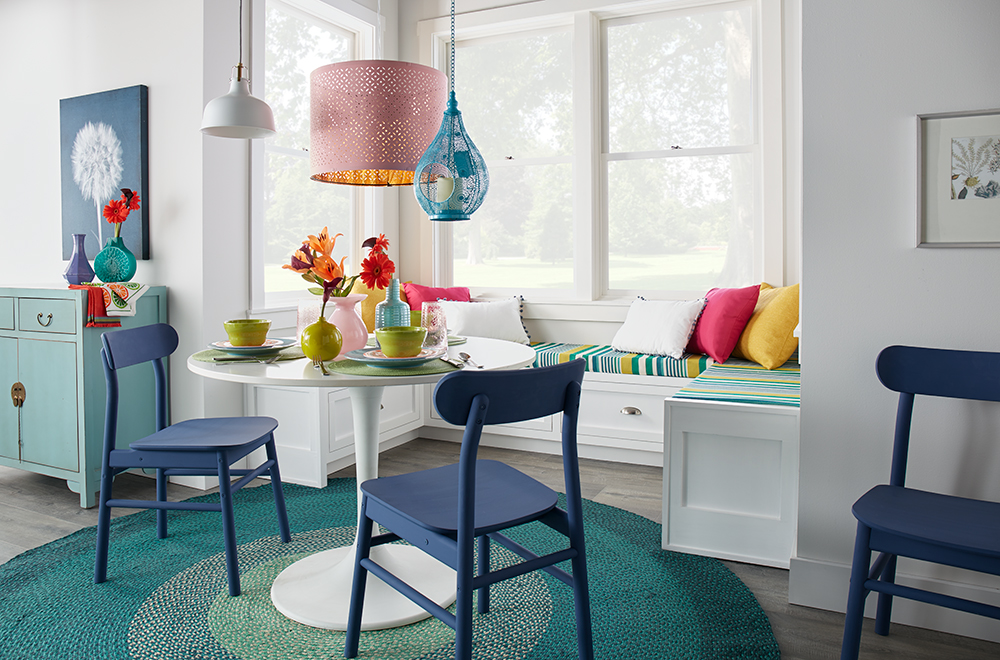
The newly primed and painted walls were the perfect backdrop for these two design styles, proving that white walls are far from boring. From bold and colorful, to sophisticated and neutral, the right white shade on your walls can open up a space to a myriad of design possibilities. Which style spoke to you?
Always remember to refer to our website kilz.com or product back labels for additional information on which primer is right for your project and detailed instructions on how to apply our products.
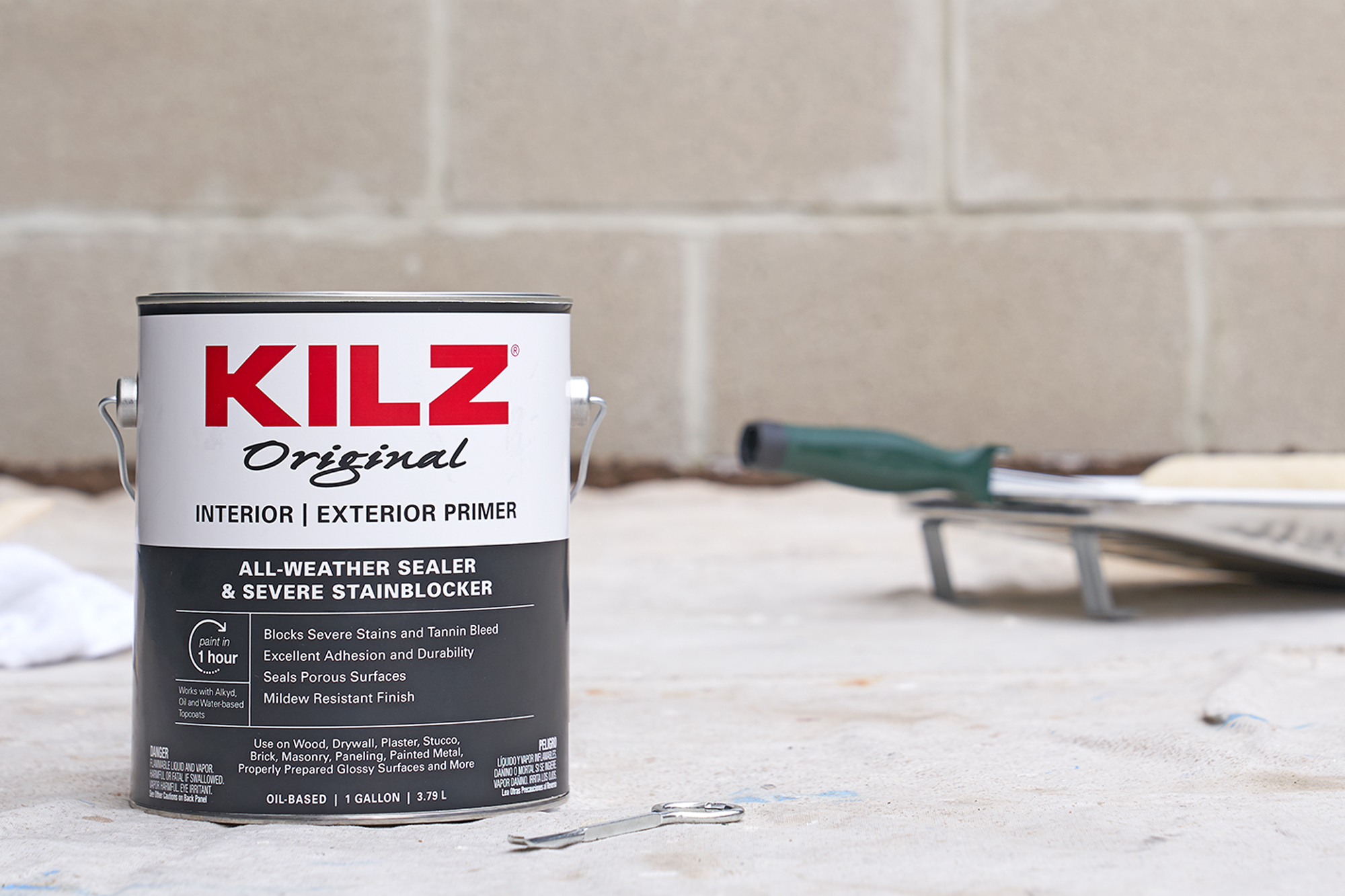
Three Primers for Exterior Projects
August 11, 2020Priming before painting is an important step for nearly every painting project, and we’ve covered quite a few different project types here on The Perfect Finish – including priming when changing wall colors, priming before painting kitchen cabinets, and even priming in moisture prone rooms in your home. Now in the heat of summer, it’s time to talk about an area of the home we haven’t often covered – the outside!
Just as important as proper prep for your indoor painting projects, priming is a critical prep step for outdoor projects. From painting your front door, to the entire exterior of your house, or even a garden fence, KILZ has a primer made for the job. KILZ® Original Primer has been trusted by pros for over 40 years and the KILZ Original lineup includes a primer formulated for outdoor projects. KILZ® Original Interior | Exterior Primer is an all-weather sealer with excellent adhesion to even the toughest to paint surfaces like masonry or bare, porous wood. When using this primer on outdoor brick, stucco or plaster, it’s important to note that the masonry surfaces should be clean, dry and cured for at least 90 days.
KILZ 2® All-Purpose Primer is another product formulated for both interior and exterior use. This water-based sealer and stain blocker would be an excellent choice for painting your front door or garden fence. Just remember this tip from the pros, if the surface you are painting is unpainted, exterior wood that has been exposed to sun and/or moisture longer than 2-4 weeks prior to painting – be sure to clean and sand it before priming. On new masonry surfaces, KILZ 2 All-Purpose can be used once the surfaces has cured for at least 30 days.
Our third pick for exterior projects is KILZ 3® Premium Primer. This fast drying, water-based primer provides excellent adhesion and a mildew resistant coating, making it ideal for exterior surfaces prone to moisture. It can be used for both interior and exterior projects and has a thicker, high-hiding formula great for blocking stains. If you live in a humid environment, KILZ 3 Premium Primer is a great choice for your outdoor painting projects.
What exterior projects will you tackle this summer?
Always remember to refer to our website kilz.com or product back labels for additional information on which primer is right for your project and detailed instructions on how to apply our products.
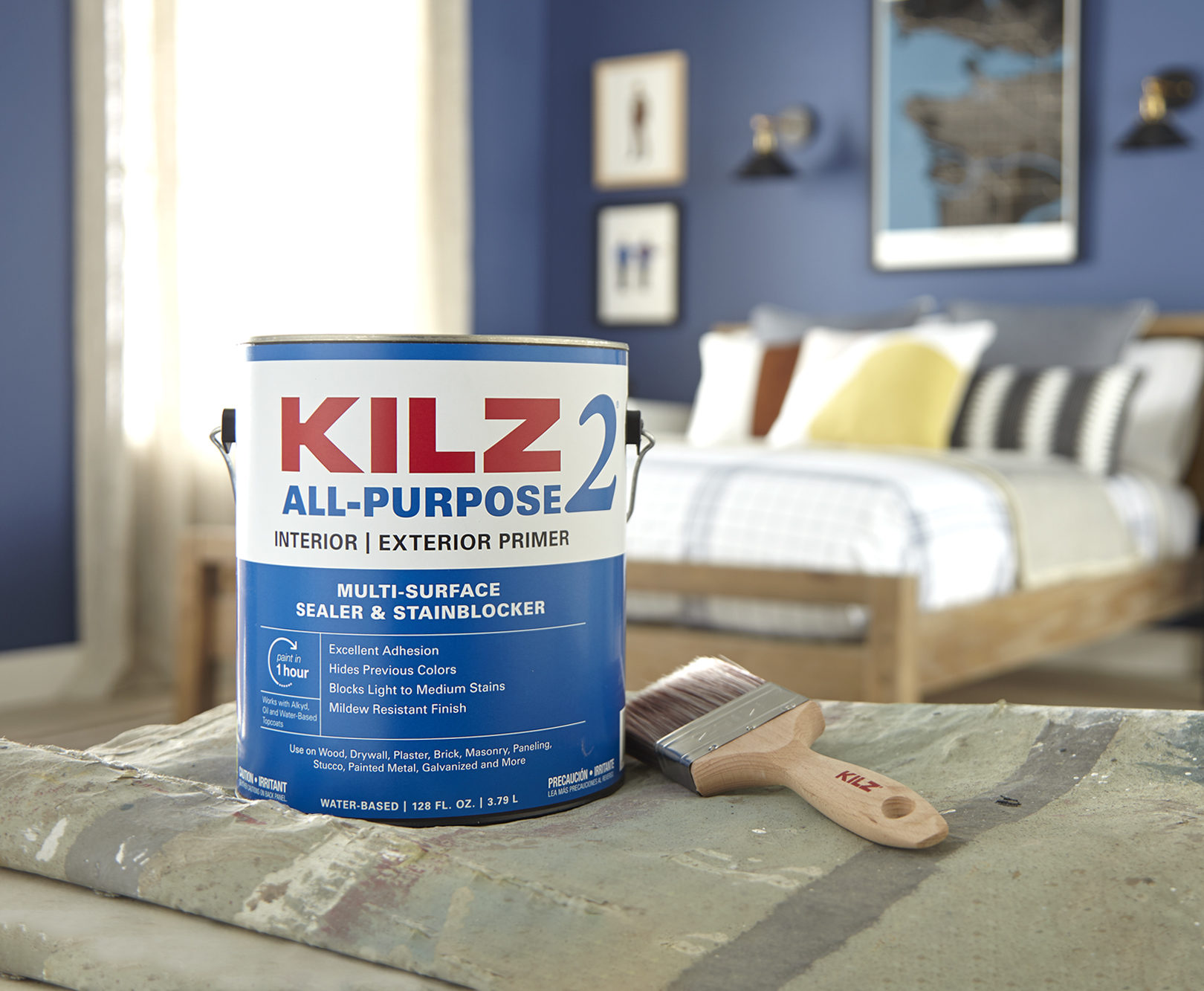
Tips for Painting Walls and Cabinets
June 1, 2020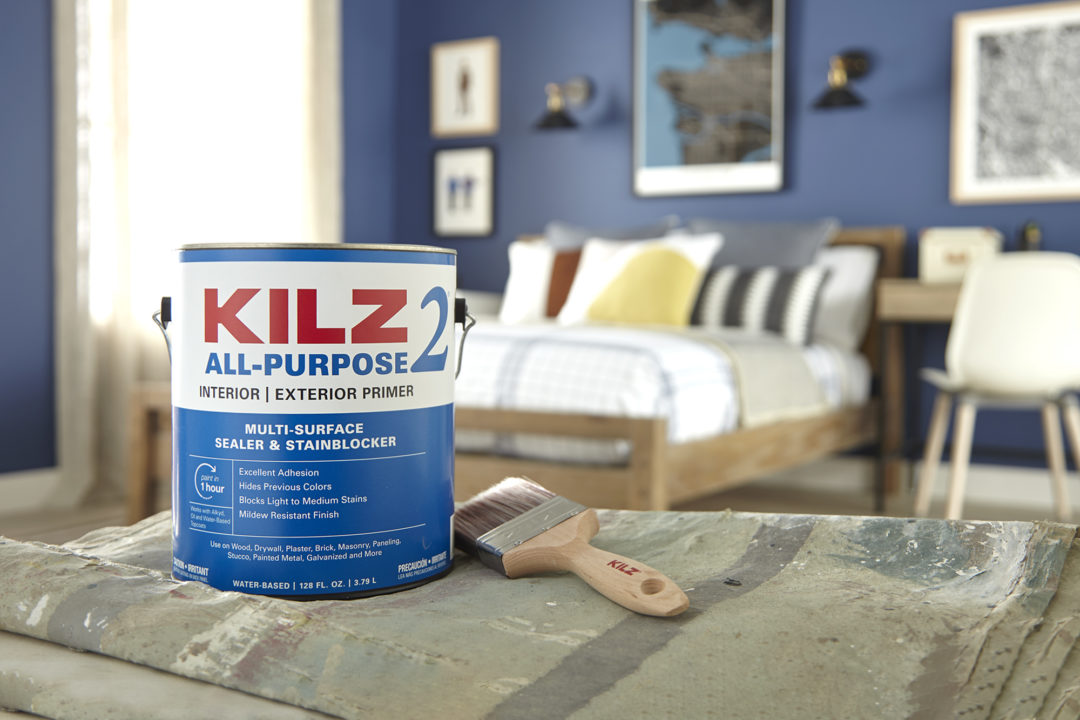
Painting your walls or cabinets is an easy and low-cost way to update any room in your house, and most painting projects can be completed in just one weekend. Equally as important as choosing the right paint color is ensuring you prime first with the right primer. Without priming before painting, you risk poor paint adhesion and previous colors or stains seeping through and ruining your new paint color.
Using the right primer ensures that your topcoat color will appear on the walls as you expected it to. If you’re painting over a darker colored wall with a new lighter shade, KILZ 3® Premium Primer works to block previous dark paint colors from seeping through and changing the look of your new paint. When painting over a light color with a new darker hue, it’s still equally important to prime first. KILZ 2® All-Purpose primer is a great choice for light to dark color changes. And if your walls have tough or exceptionally dark stains or damage from smoke or water, KILZ® Original Primer and KILZ Restoration are both formulated to block severe stains.
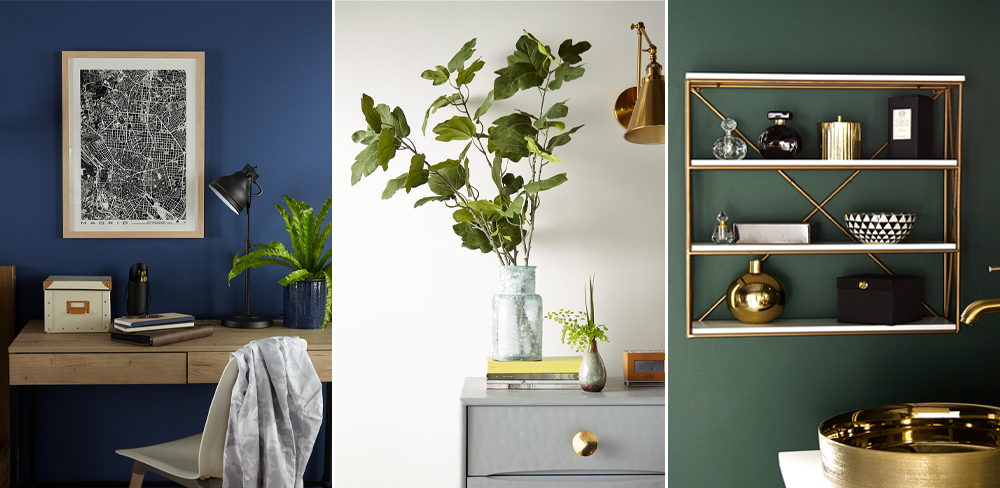
Priming before painting ensures your paint color pops!
What if you’re painting cabinets, do you need to prime? If you want excellent paint adhesion and for your colors to appear in their truest hue – the answer is yes! Primer also makes your paint job durable, and that is especially important in high-traffic areas like kitchens. You often find cabinets in kitchens, bathrooms and laundry rooms, and these areas of the home are subject to fluctuating temperatures and humidity levels that can make paint peel. For these spaces, a primer like KILZ Mold & Mildew dries with a mildew resistant primer finish that helps protect and extend the life of your paint.
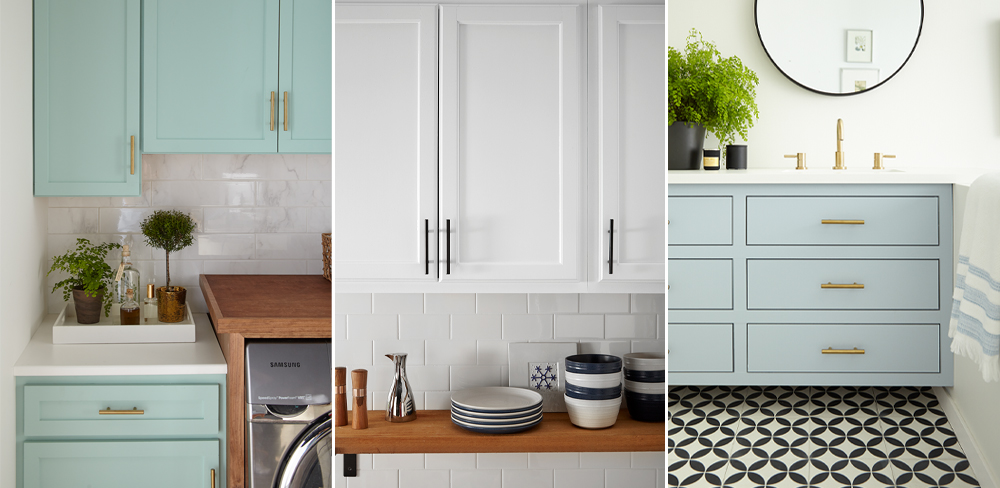
When painting cabinets, priming first ensures excellent adhesion and truer color from your topcoat.
While priming before painting can seem like an extra step, it’s a vital part of the painting process!
Always remember to refer to our website kilz.com or product back labels for additional information on which primer is right for your project and detailed instructions on how to apply our products.
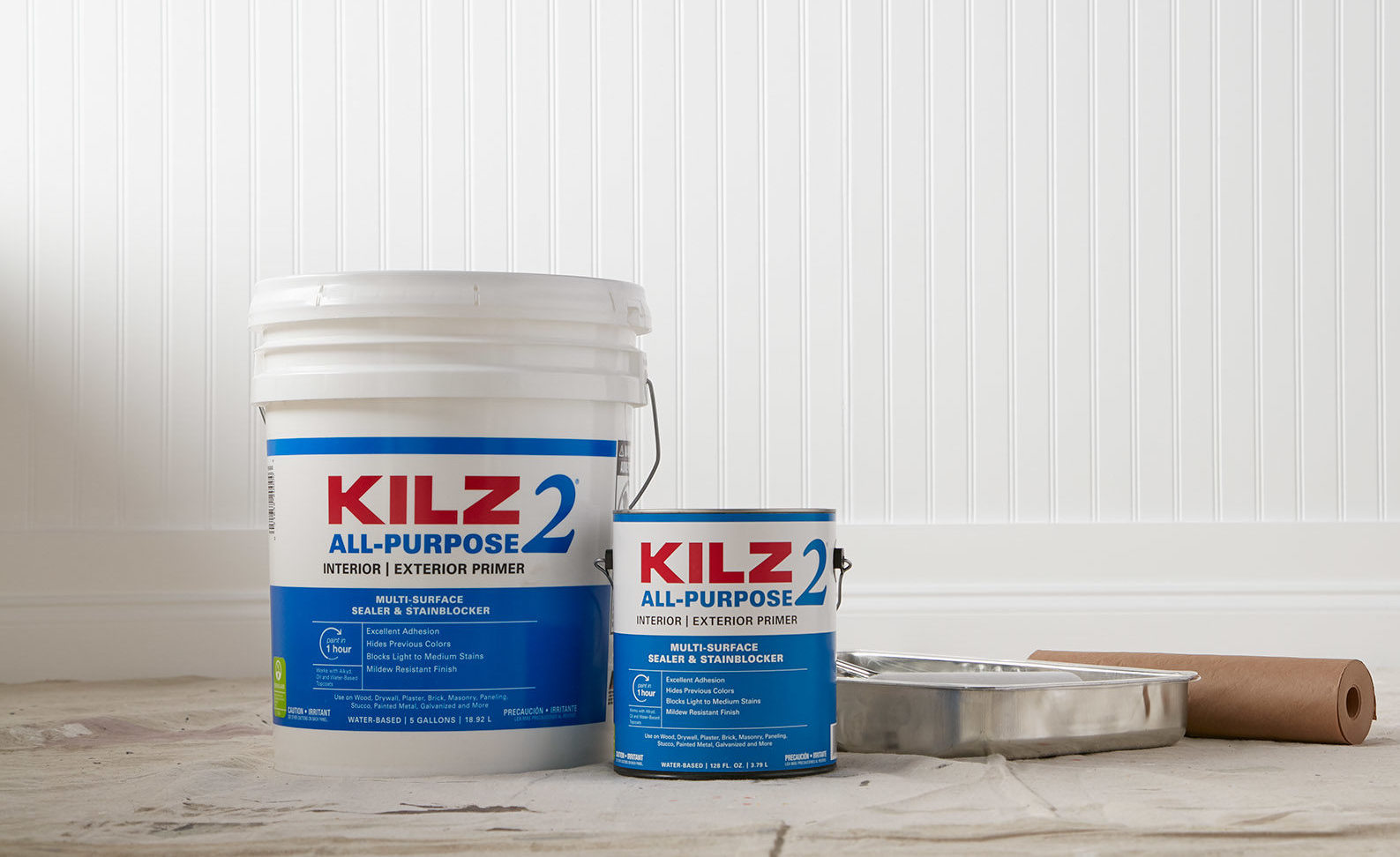
How to Choose the Right Primer for Your Paint Project
January 31, 2020Do your New Year’s resolutions include taking on that painting project you’ve been putting off? Or maybe you have a list of several different DIY home improvement projects on your list to complete in 2020. No matter the size or scope of your project, taking the time to do proper prep work will ensure results that you can be proud of for years to come. Prep can seem like a time-consuming extra step, but trust the pros, it’s worth the time spent.
If your next DIY venture includes painting, the first step is choosing the right primer for your project. The KILZ® brand offers a family of primers to help you complete a wide range of painting projects and tackle a wide variety of common painting problems. With so many primers to choose from, how do you know which is right for your project? To start, assess the type of surface you will be painting.
If you just moved into a new house or completed an addition and you’re painting new drywall, KILZ® PVA Drywall Primer or KILZ® 1 Standard Interior Primer are both made for the job.
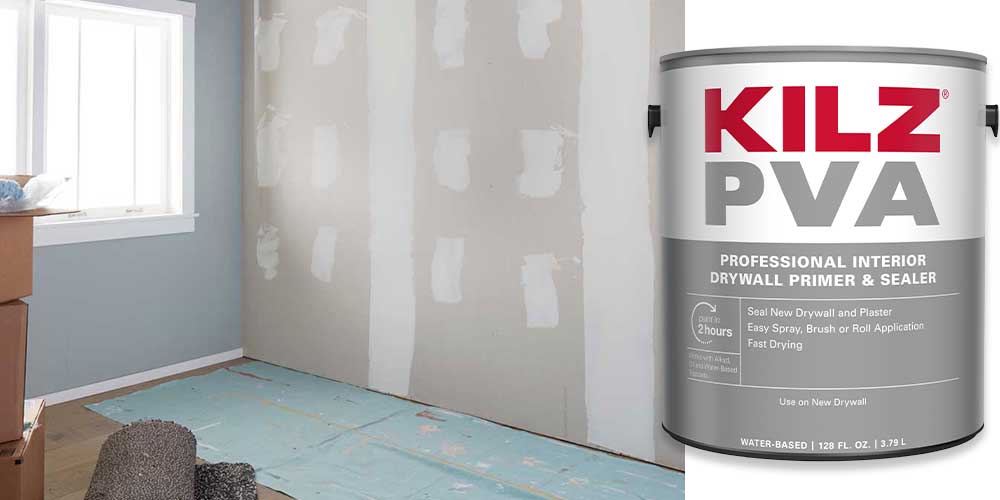
Perhaps you’re painting a surface that ordinary paint might not stick to, such as a slick glossy surface, aluminum, vinyl, ceramic tile or glass. In that case, KILZ® Adhesion Interior/Exterior Primer is an excellent choice.
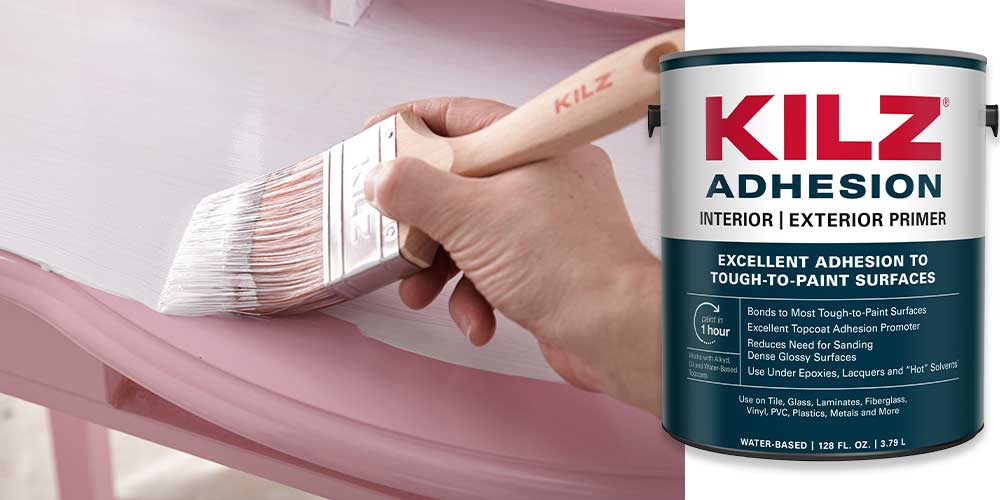
Pro painters and DIYers alike are often in need of a primer that offers multiple surface solutions – which is why KILZ 2® All-Purpose Primer is the choice of many! A fast drying, water-based multi-surface primer-sealer-stain blocker, it offers excellent adhesion, a mildew resistance primer film and can block light to medium stains like felt marker or minor water stains. It’s also a good choice for a simple color change, to ensure the truest color from your new topcoat.
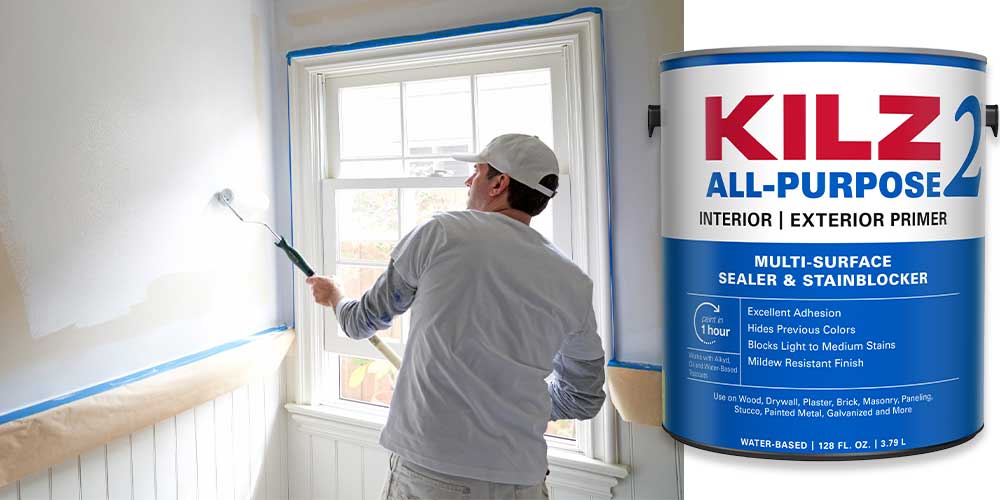
And for projects that require even heavier lifting, KILZ Restoration™ offers the performance of a traditional oil-based primer in a water-based formula and can tackled the toughest odors, stains and even fire damage.
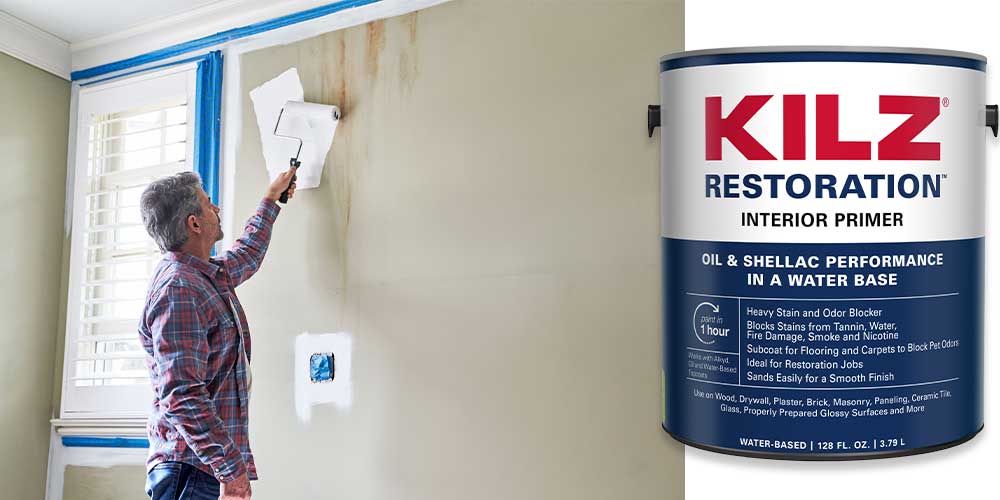
For those taking on more complex projects, including blocking smoke or pet odors, covering dark paint colors or heavy stains, there is a KILZ® Primer for you too! KILZ 3™ Premium is one of our more heavy-duty and high hiding formulas, making it ideally suited for blocking old dark colors or covering substantial stains.
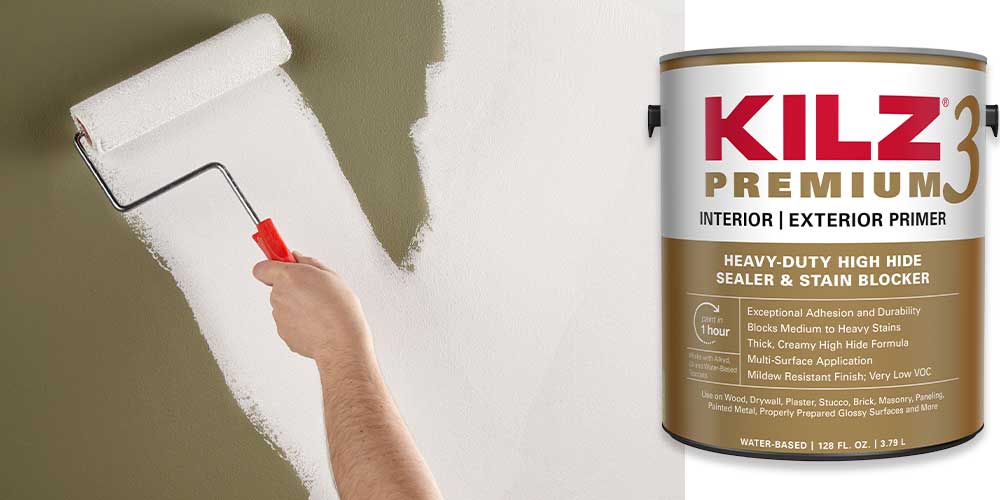
If you’re still unsure what primer to use for your next project, answer these simple questions below and don’t be afraid to ask a friendly pro at your local hardware or home improvement store for help.
Choosing the Right Primer:
- Identify the surface type you will be painting.
- Assess any problems you need to tackle, such as stain or odor blocking, and determine the severity of the issue.
- Take into account any unique scenarios like needing a mildew resistance finish coat (good to keep in mind when painting moisture prone areas like bathrooms and laundry rooms), or if you’re covering a dark paint color with a new lighter hue.
Always remember to refer to our website kilz.com or product back labels for additional information on which primer is right for your project and detailed instructions on how to apply our products.
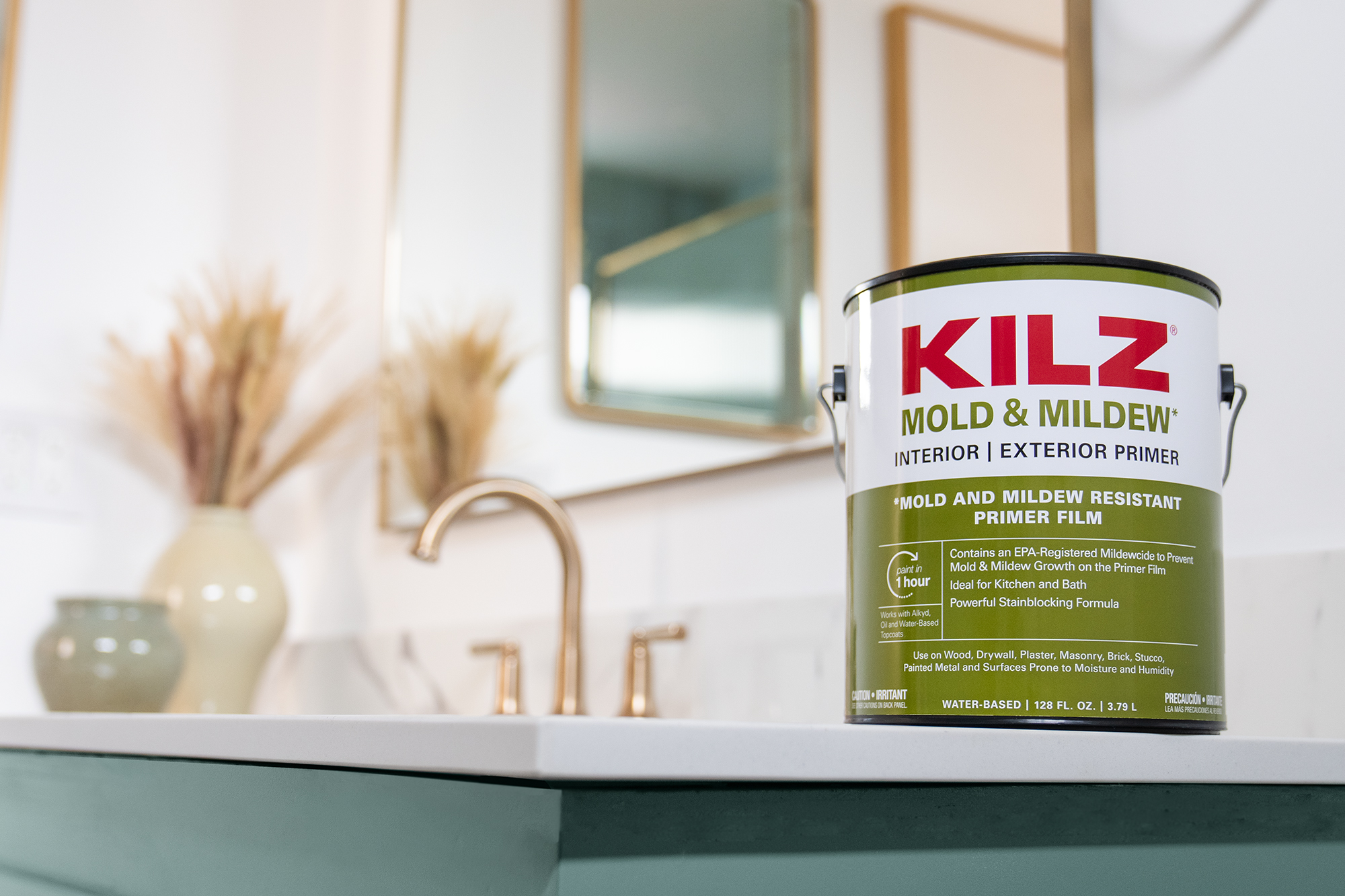
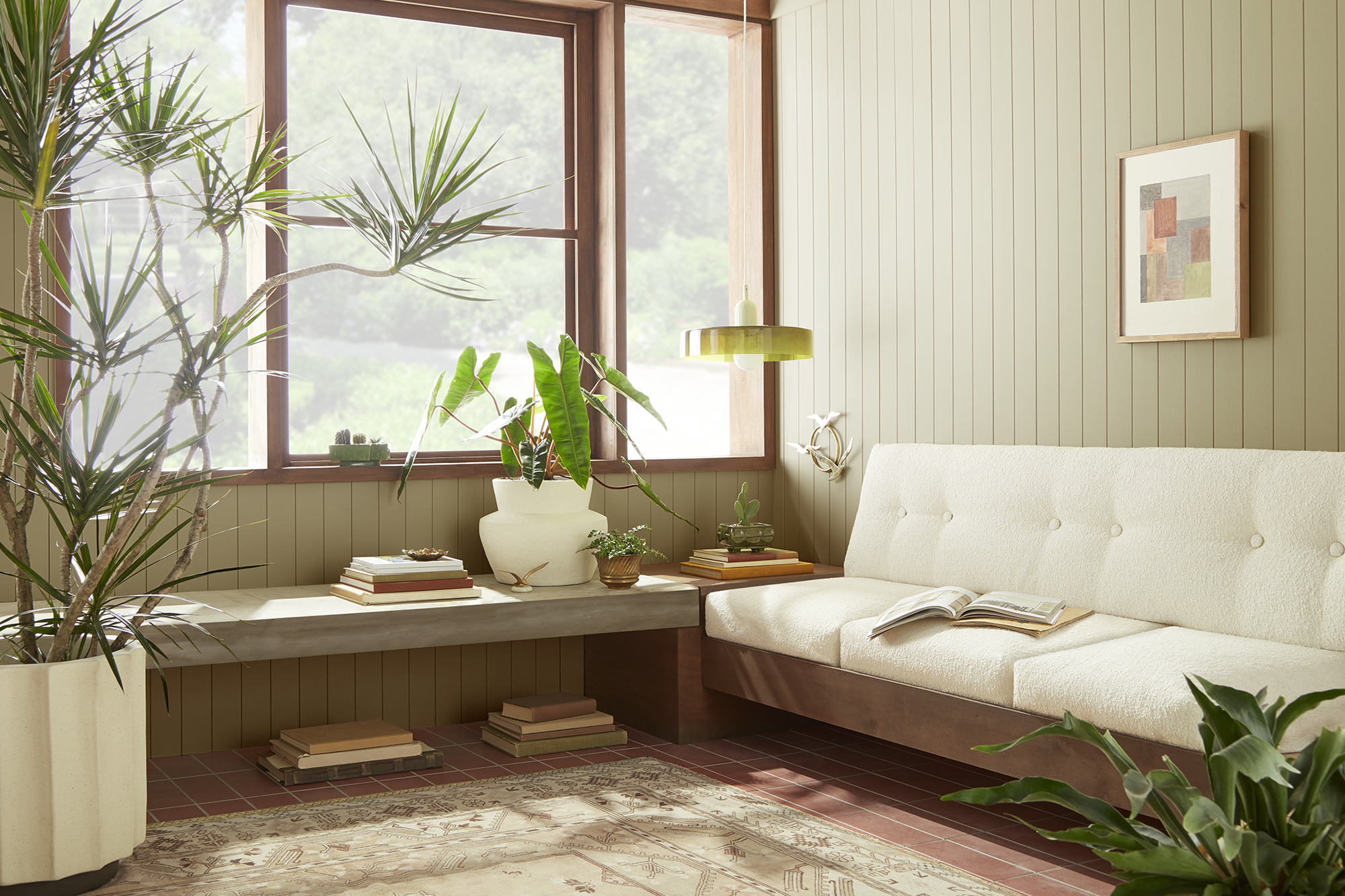

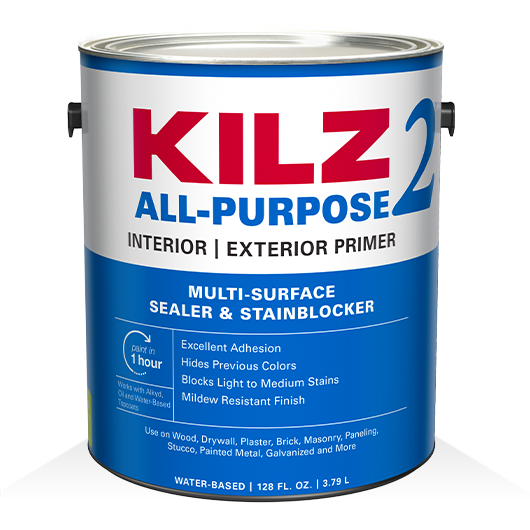
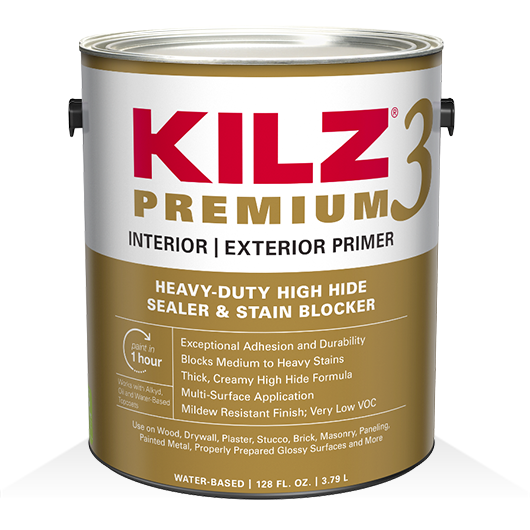
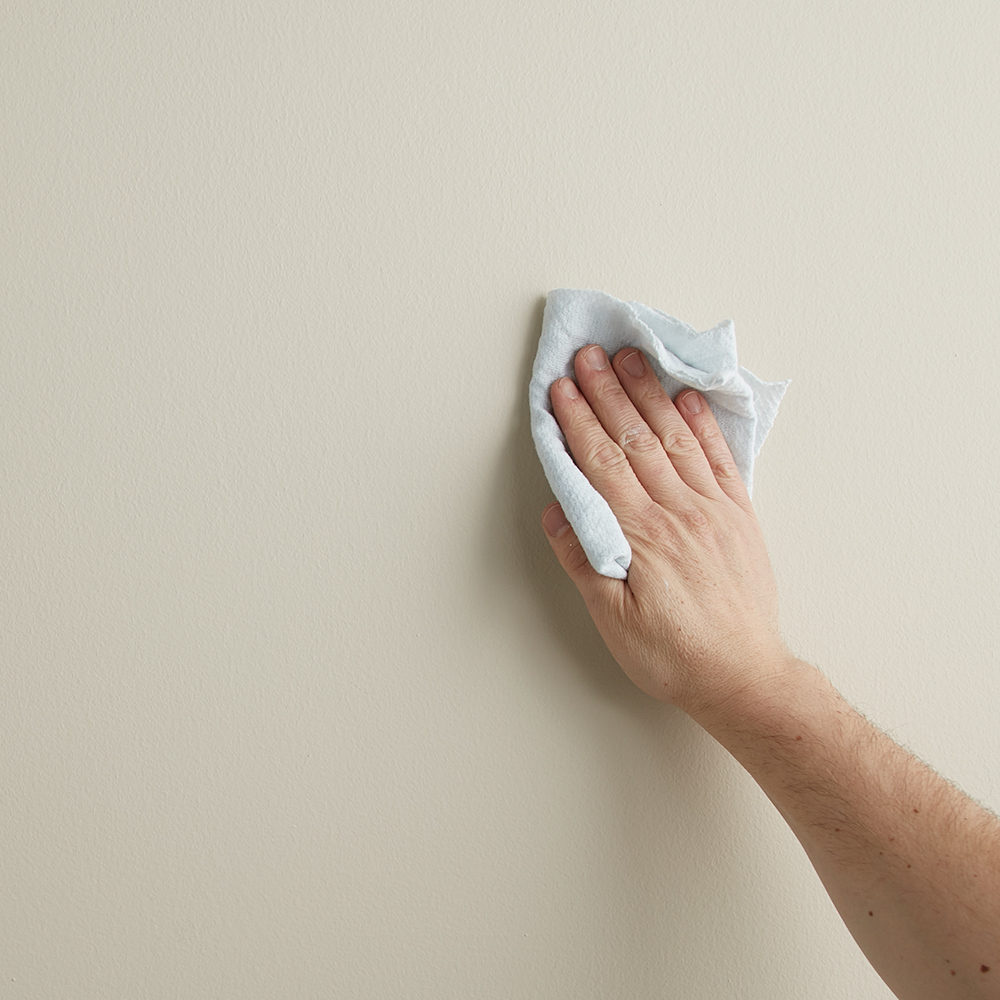
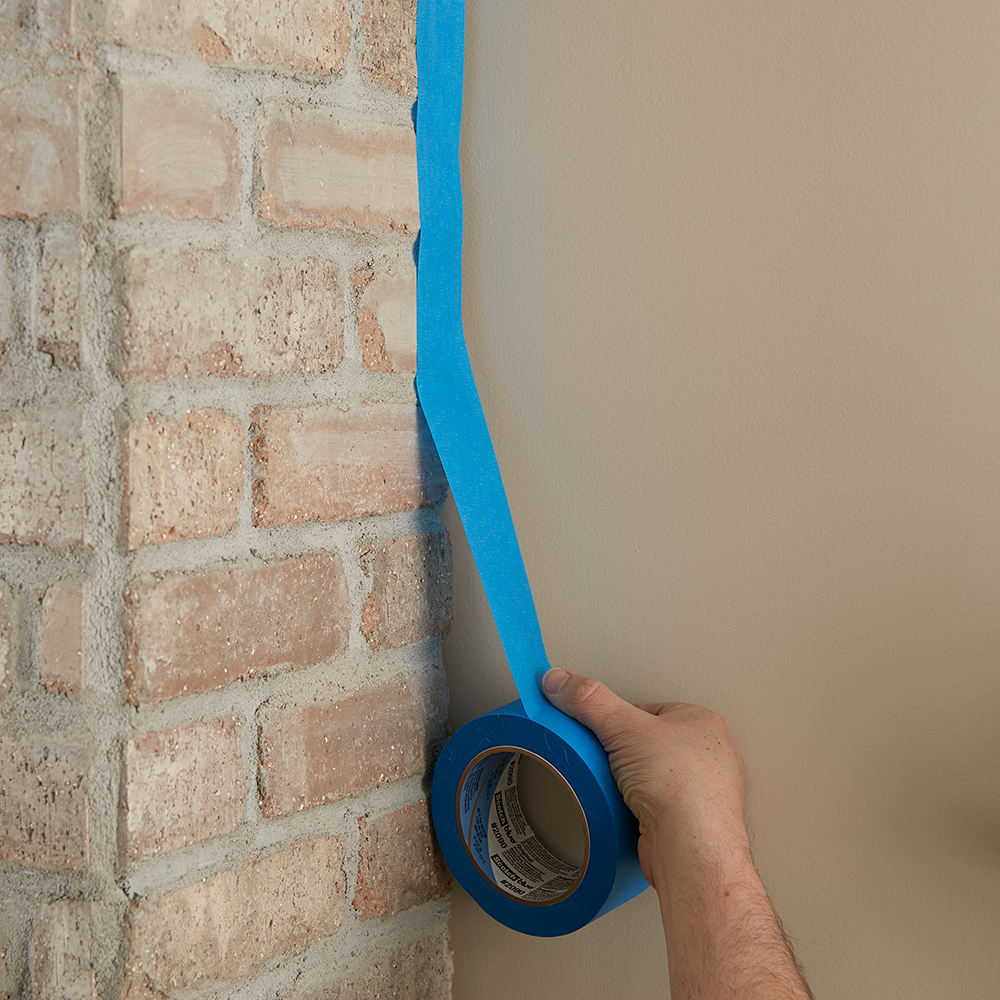
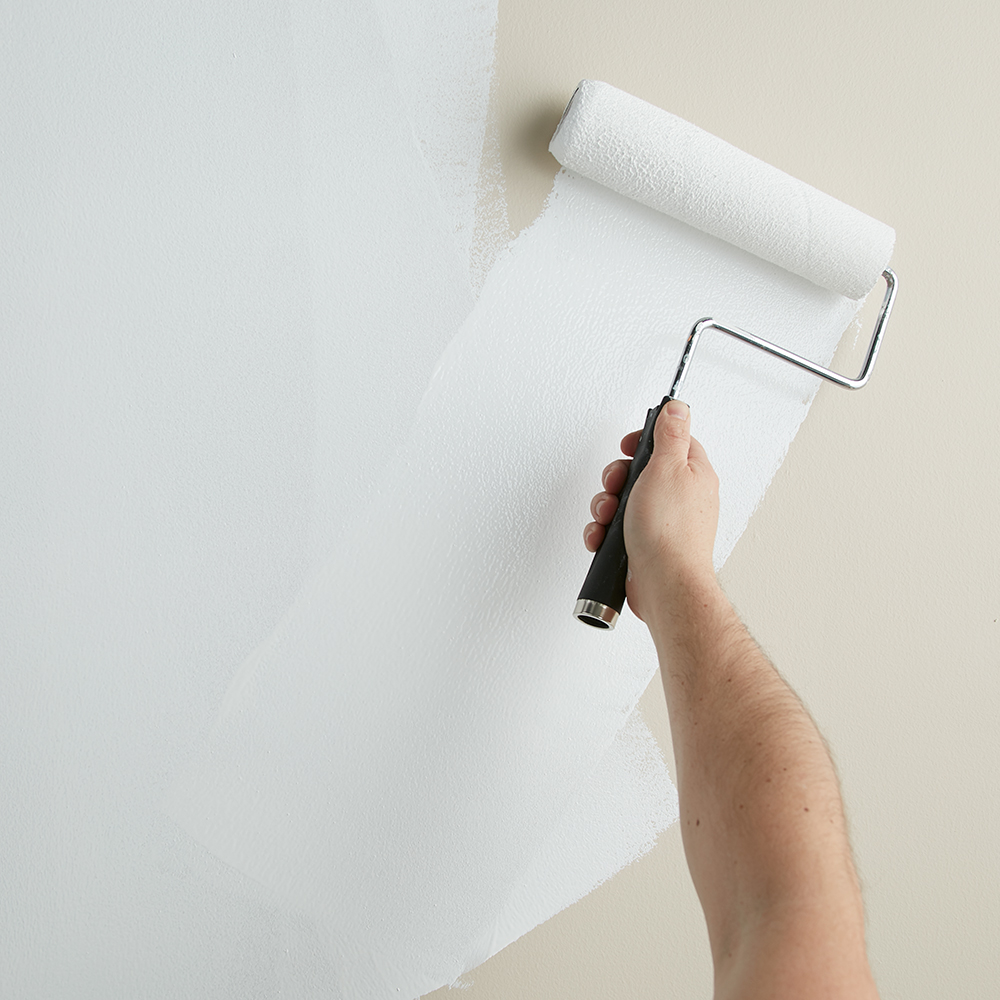
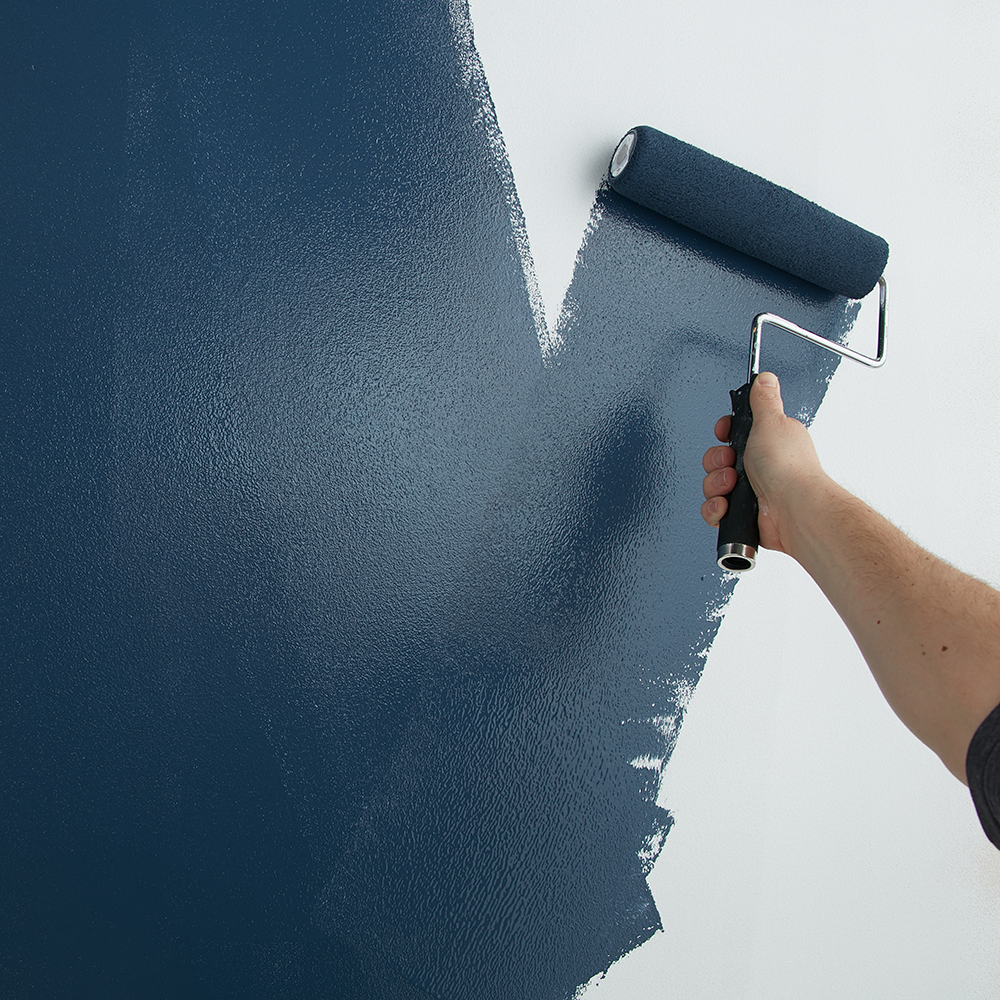
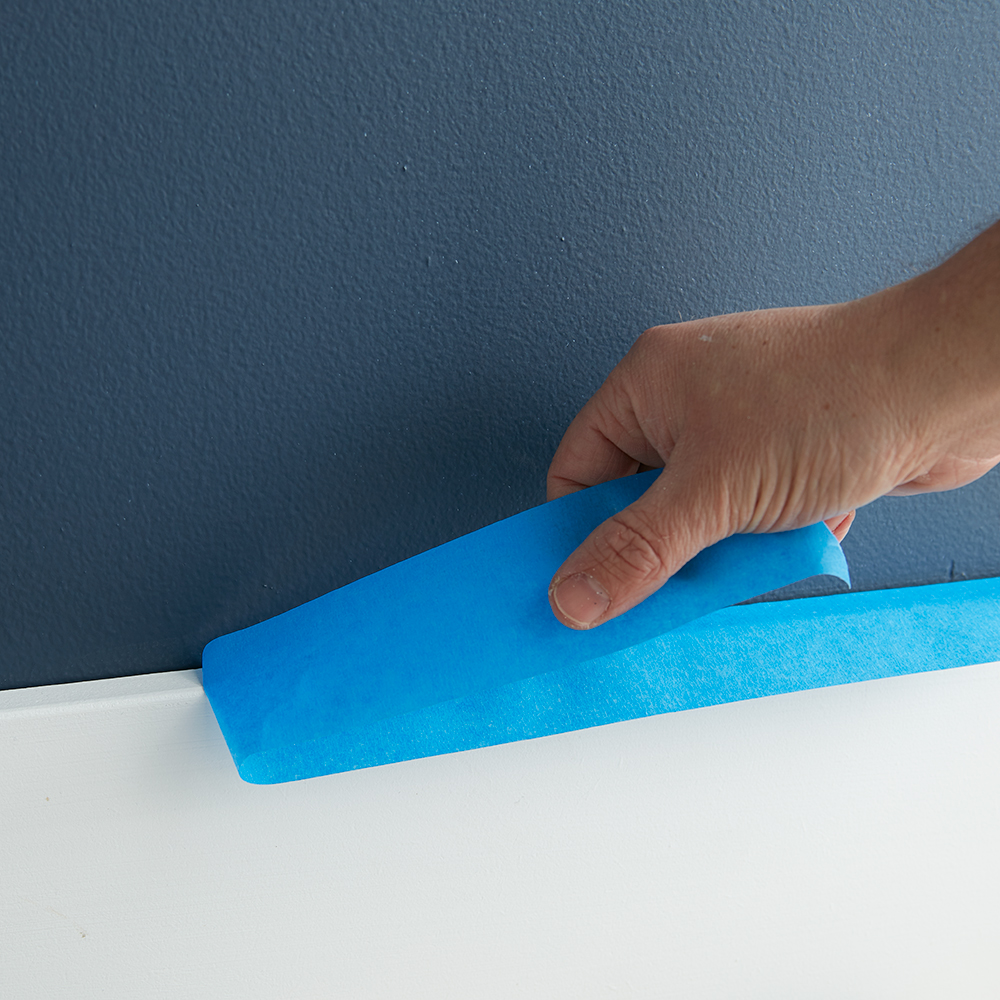
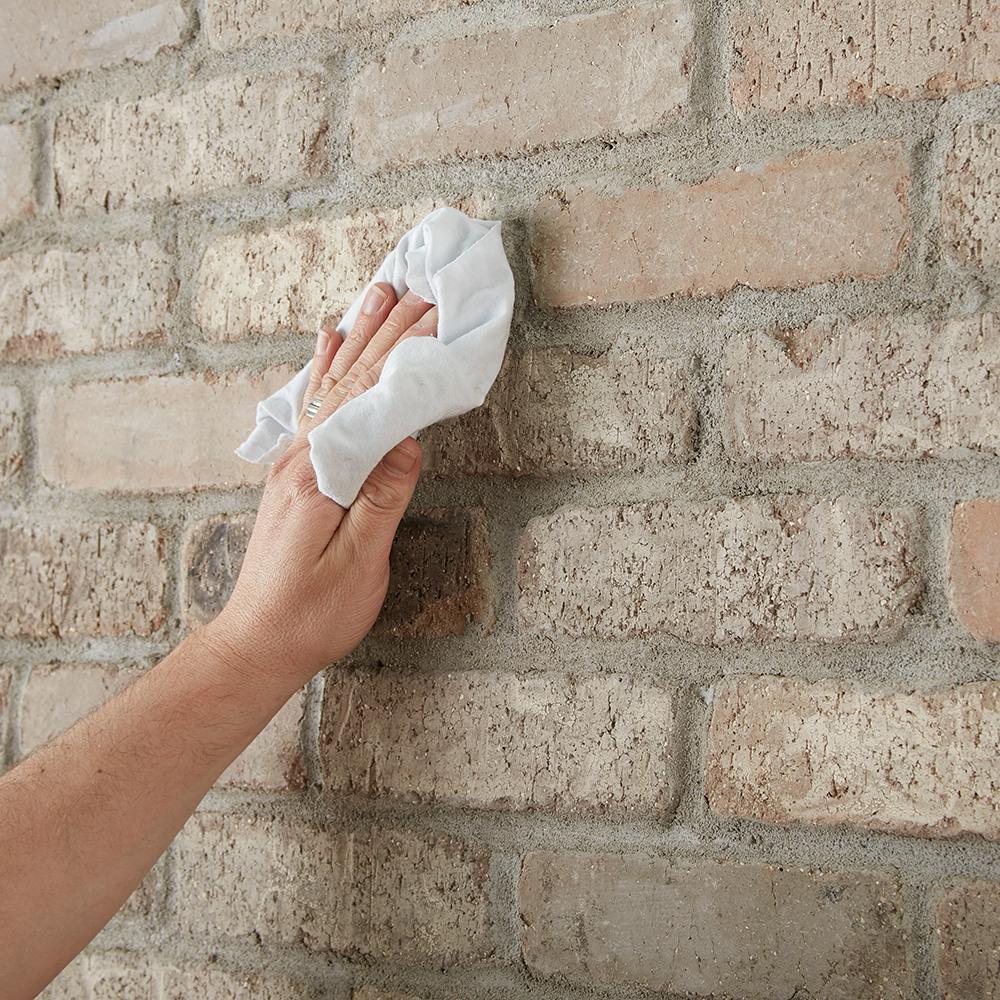
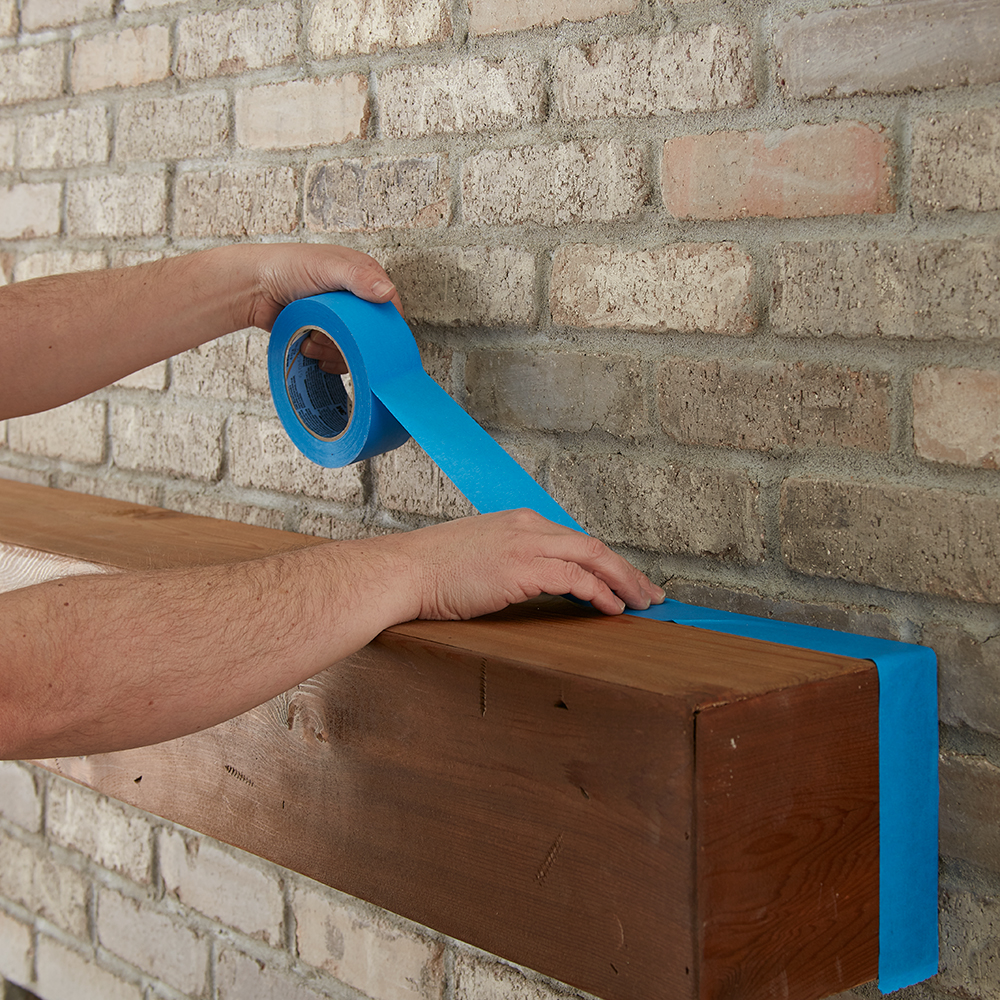
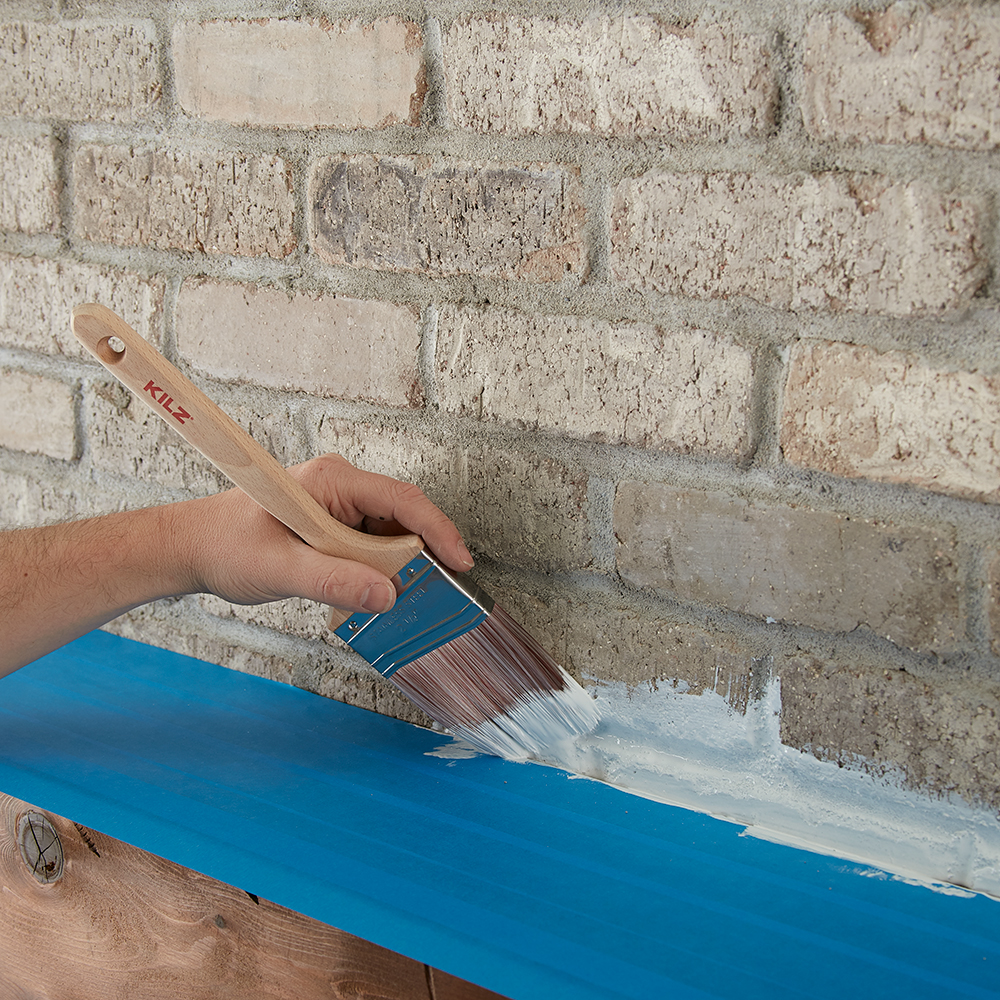
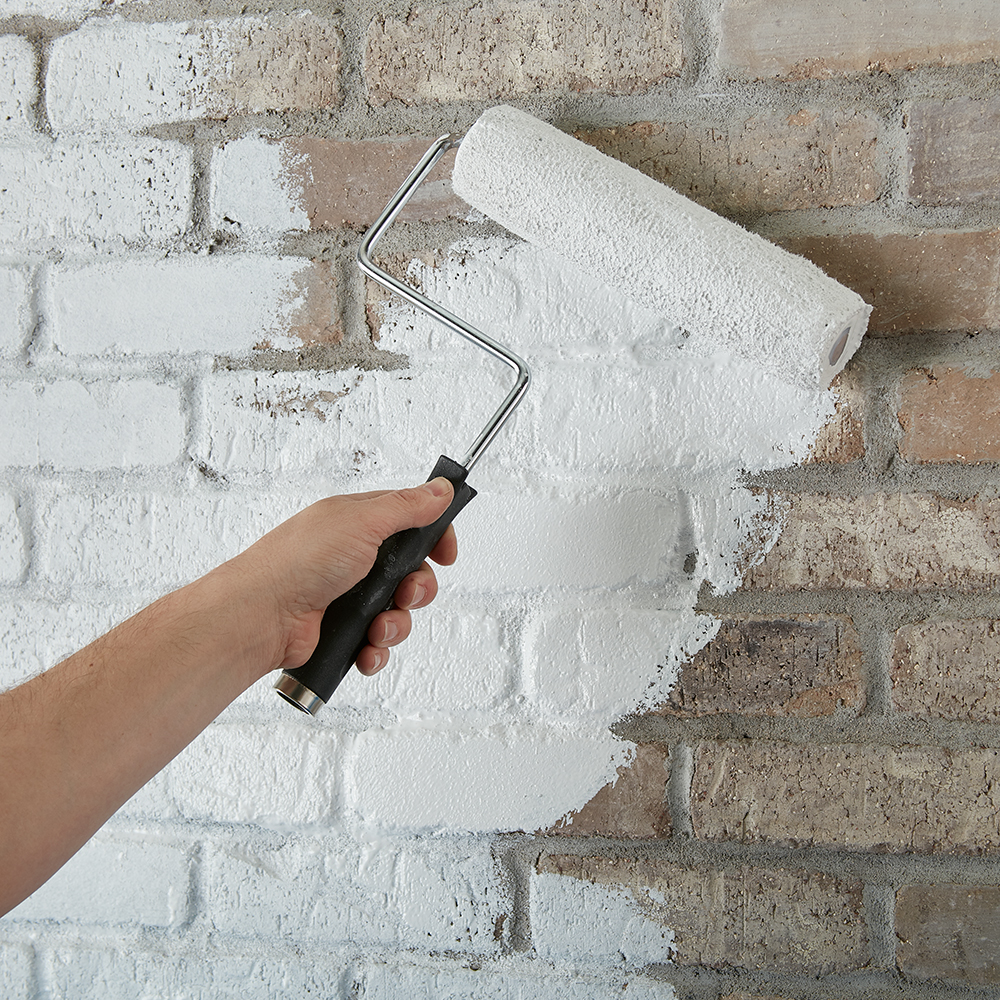
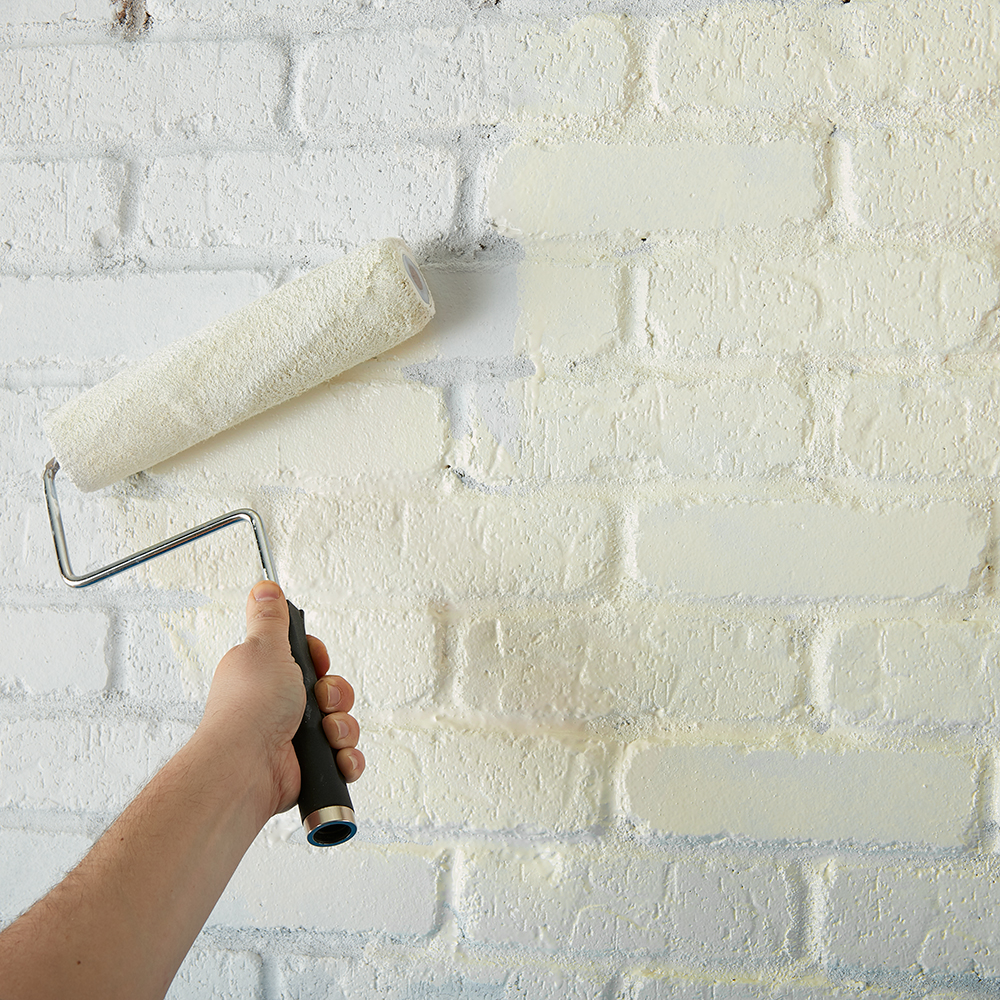
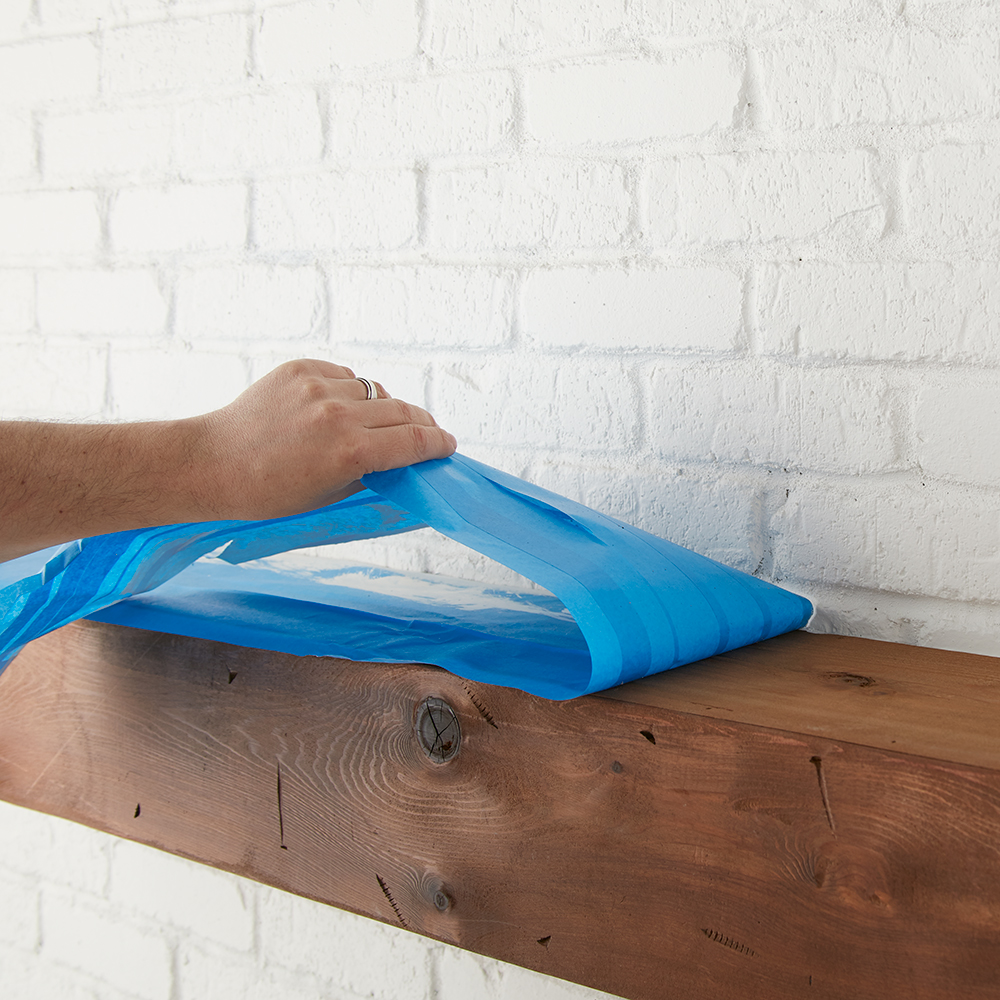
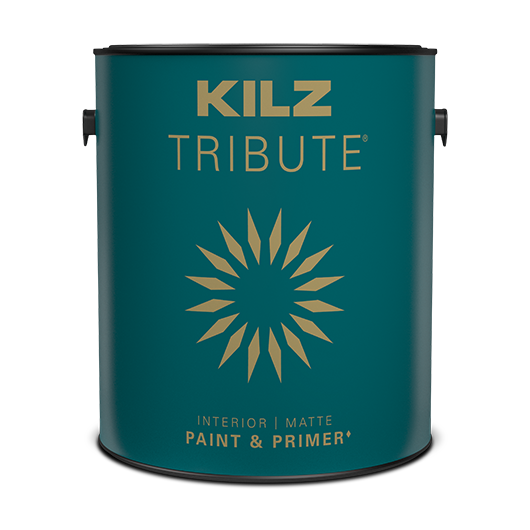
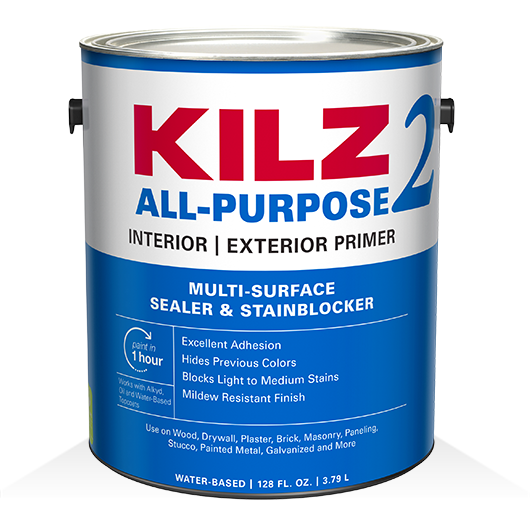
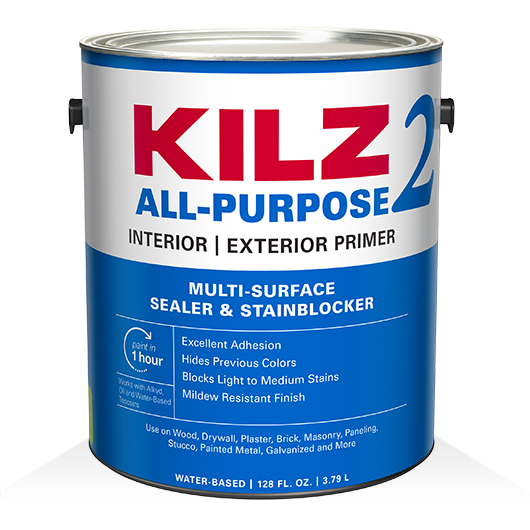
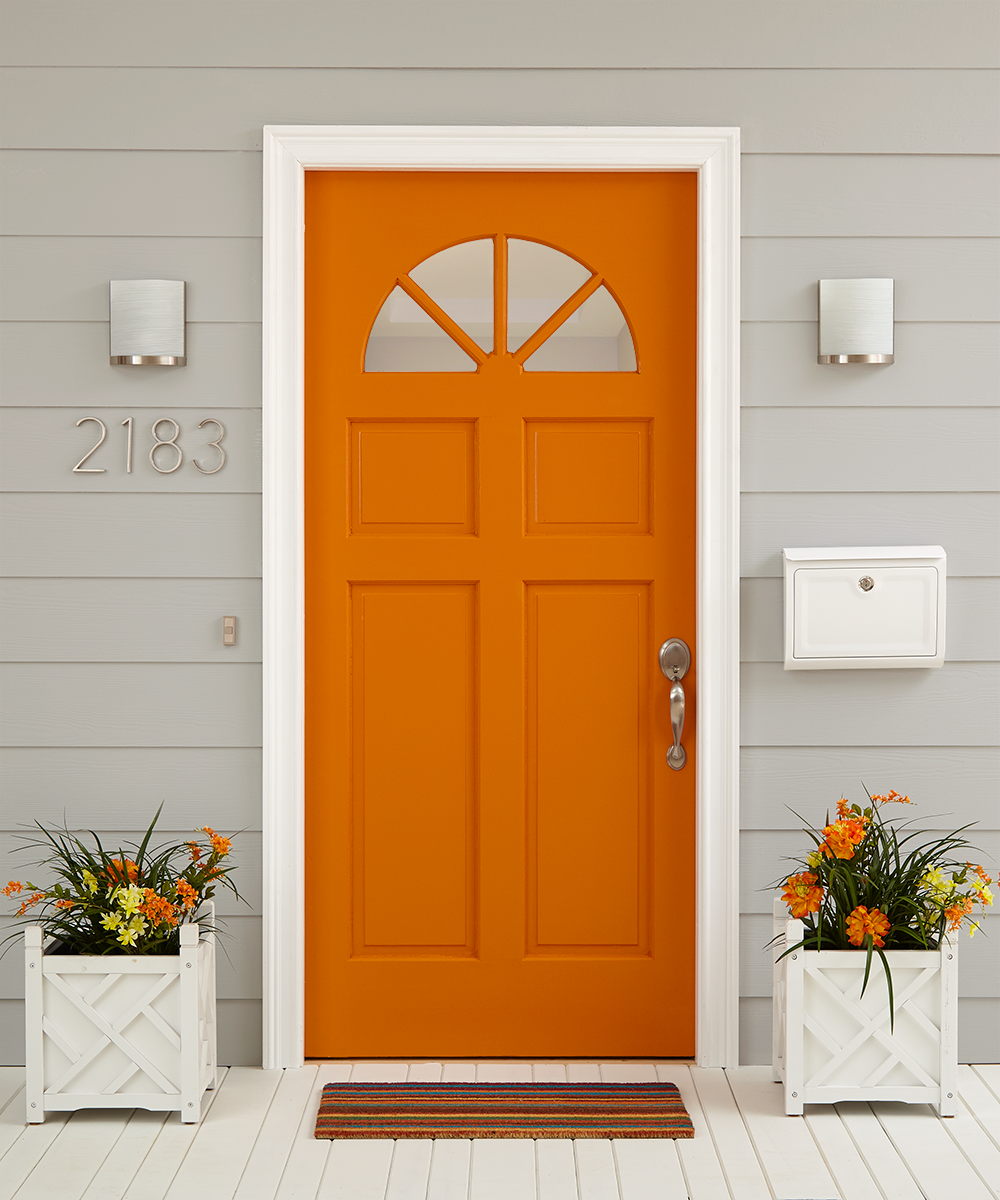
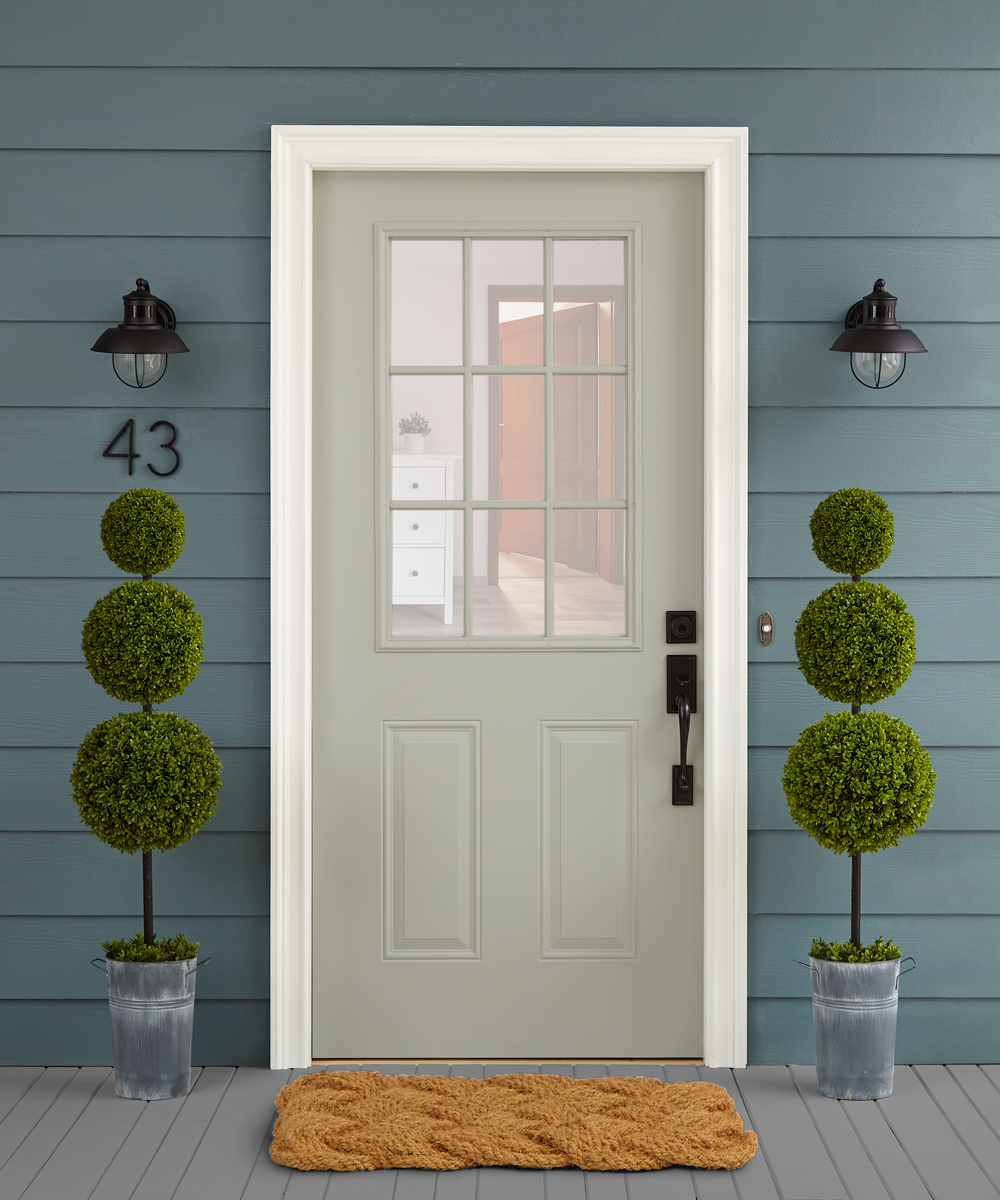
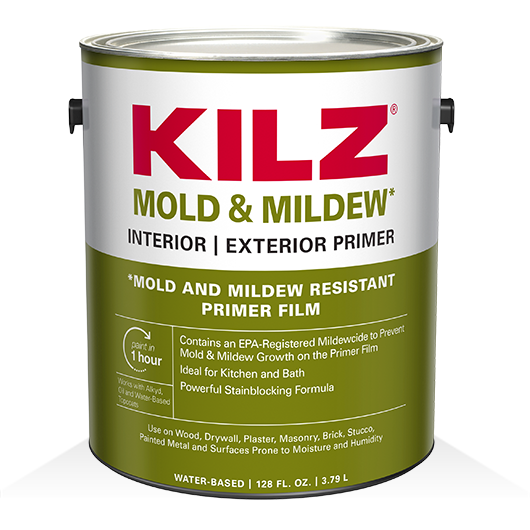
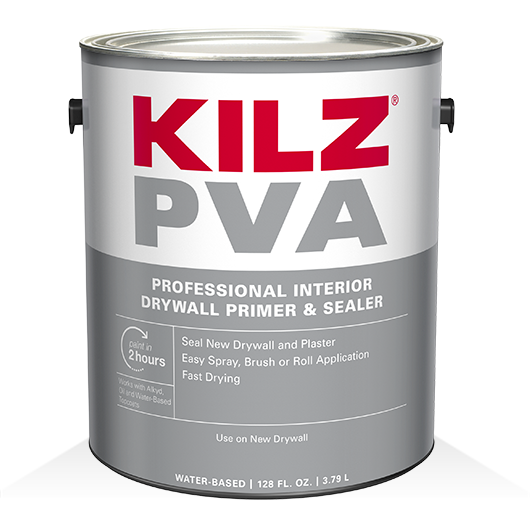
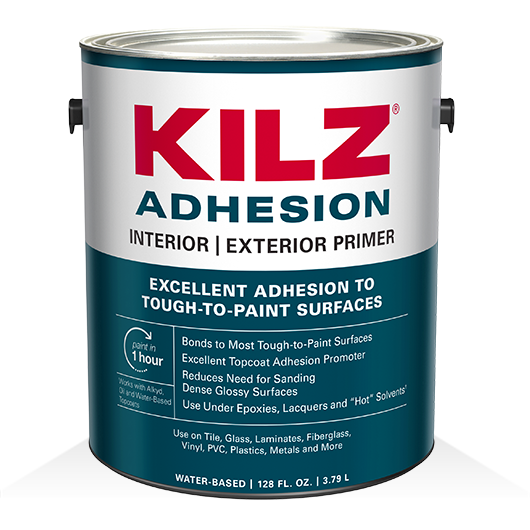
join the conversation:
SHARE this post: